Megamenu Global
Megamenu featured, megamenu social, sample thesis proposals.
Lanfranc of Bec: Confrontation and Compromise Imperial Expansion and the Evolution of the South and Southeast Asian economies Nantucket’s Role in the War of 1812 Letters Home: Records of the Experiences of Common Soldiers in the American Civil War Writing for Stalin: American Journalists in the USSR, 1928-1941 Dismal Scientists, Diplomats, and Spooks: Bissell, Milliken, and Rostow and Their Impact on U.S. Foreign Policy Media Reflections of Western Public Opinion in the Suez Crisis The Implications, Effects, and Uses of Media in the Emmett Till Lynching Cromwell Lives while Mason Stalks: Irish Nationalism and Historical Memory during the Troubles ‘My broken dreams of peace and socialism’: Youth propaganda, personality, and selfhood in the GDR, 1979-1989.
Lanfranc of Bec: Confrontation and Compromise
The ecclesiastical history of Europe in the 11th century revolves around the investiture conflict and the Gregorian reform effort. These two issues forced their way into religious lives around the continent. Even in England, on the edge of the world, Anglo-Saxon and Norman reformers grappled with these challenges to the construction of a “universal church.” I would like to enter into this world through the case study of Lanfranc of Bec. Lanfranc is an apt choice for this intensive focus because of the apparent philosophical paradoxes that dominated his life.
Early in his career, Lanfranc was a staunch supporter of Pope Leo IX in the Eucharistic controversy with Berengar of Tours. The doctrine of transubstantiation was, however, less important to Lanfranc than the idea of “the universal church.” Significantly, this new church was to be united under the stronger and more demanding popes in Rome who were early supporters of the young Italian monk. Lanfranc’s transformation began when was appointed abbot of St. Etienne, Caen in 1063 under the direct patronage of William the Conqueror. This relationship continued with Lanfranc’s promotion to Archbishop of Canterbury in 1070. In this role, Lanfranc severed all most traditional ties with Rome. He did command the right to supervise and veto any papal synods planned for England. In addition, Lanfranc even skipped the mandatory pilgrimage to Rome to receive the pallium, a tradition for English bishops that dated back to Gregory the Great and the 6th century.
Traditional scholarship has tended to portray this break as pragmatic. Lanfranc’s new master, William, demanded a more present loyalty than the faraway Church of St. Peter’s. Loyalty in turn led to advancement and a place in religious governance of countless souls in England. To justify these mercenary considerations scholars described the admittedly conservative Lanfranc as a Carolingian bishop, a relic of an empire then dead for two centuries. The Carolingian era was a time of dramatic expansion for the church, largely under the protections of its secular Christian protector, Charlemagne. It is easy to see parallels, at least from the Norman point of view, between the conquest of England in 1066 and the forceful conversion of the Saxons in 8th century. Both these invasions brought subject peoples in line with a new, larger Christendom. Historians have written about Lanfranc as a player within this system of sacred reform spearheaded by the secular.
In my study I plan to reexamine this view. Although the Archbishop did abandon Gregory VII at the time of his greatest need, the investiture conflict, Lanfranc’s role in the English reform need not be seen as driven by Normandy rather than Rome. For example, William’s concern for the piety of his new subjects was at best secondary to an interest in appointing bishops who would maintain order on the tumultuous island in place of the absentee king. Thus it was with a relatively free hand that Lanfranc directly reformed both Canterbury and England as a whole. Some of these changes, like his emphasis on clerical celibacy, were directly in line with the Gregorian reforms that he had supposedly renounced upon his arrival. In other instances, Lanfranc was more open minded to the religious practices that preceded him. Unlike other Norman bishops that arrived after the conquest, the Archbishop was far more accommodating to both local English saints and the institution of monastic cathedrals. These examples create a far more complex picture of Lanfranc. It is clear that he was more loyal to the Gregorian reform movement than to any particular pontiff occupying the See of St. Peter. At the same time, his syncretistic approach would have been at odds with any of the uncompromising popes that he had dealings with. These incongruous details suggest the need to revise traditional interpretations of Lanfranc’s life. Within a wider scope, I hope to demonstrate how the clergy positioned themselves in the larger conflict between the church and state at this time.
In pursuing this topic I want to integrate traditional and less traditional sources in an attempt to create a fresh portrayal. Any study of medieval political and ecclesiastical history will rely heavily on the chroniclers. Specifically I will use the Anglo-Saxon Chronicle and Eadmer’s Vita Anselmi for the Anglo-Saxon perspective. For the Norman point of view I will use chronicles by William of Jumièges and Gilbert Crispin. To supplement these more formally produced histories, I will read Lanfranc’s own works including his major treatise on the Eucharist, the Liber Corpore et Sanguine Domini, which I fail to believe he so easily abandoned on his arrival to England. In addition, his personal correspondence and monastic constitutions, both of which have been recently republished, will be usefully in understanding his own views, whether they be practical or theological. Lastly, I want to use architectural analyses of the church that Lanfranc built at Canterbury and studies of relic worship surrounding the remains of local saints like Dunstan and Theodore. These less traditional sources, while harder to obtain, will, I hope, provide new insight into Lanfranc’s life and, at the very least, provide social and cultural context for this specific period. The result will be a study that uses the analysis of Lanfranc to address larger question concerning the orientation of individuals within 11th century conflicts.
Back to top of page
Imperial Expansion and the Evolution of the South and Southeast Asian economies
The arrival of Vasco De Gama in 1498 on the beaches of modern-day Calicut marked the beginning of the intensification of economic relations between East and West, and the first encounter of Europeans with an ancient and complex commercial network reaching by land and sea from Europe to China, handling trade and traffic of far greater value than anything known in the West. Luxury products from China, silk and precious metals from Iran, the cotton textiles of India, the gold and ivory of East Africa, and the spices of Indonesia were all connected through highly advanced and dense trading networks. While the Indian economy is often represented as having stagnated under the weight of European intrusions, it is clear that particularly in coastal areas, a brisk and dynamic coastal trade flourished under the aegis of European rule. The creation of a world market in commodities such as rice gold, silver, spices, textiles and other raw materials occurred simultaneous with displacement of local markets as European imperial reach was extended over an increasingly wide part of the globe.
By the mid 18th century, the two great chartered companies, the British East India Company and the VOC (Dutch East India Company) had transformed from mere commercial trading ventures to entities that dominated economic relationships with Asian economies and began to acquire auxiliary governmental and military functions. By 1765 the British East India Company was effectively the de facto sovereign in Bengal by virtue of its overwhelming military power in the region, and its acquisition of the diwani, or the right to collect territorial revenues. For both the Dutch and British East India Companies, it is clear that the acquisition of territorial empires and quasi-governmental functions had profound effects upon the nature, scope, and distribution of investment within the Companies from Europe, but also upon the character of the relationship between indigenous traders, merchants, and financiers, and Europeans. Lakshmi Subramanian, a historian who has published some of the most important works dealing with the relationship of the Marathas and the British in Bombay, mentions how Law de Lauriston, the ex-Governor General of French India, “recognized the local banking community in 1777 as the decisive factor in any future alliance of the French and Indian States against their inveterate antagonist the English East India Company.” In a recent paper Chaudhury asserts how the local credit markets of eastern India, particularly Bengal, were seminal in rescuing financially several of the European Companies in the seventeenth and early eighteenth centuries from chronic shortages of working capital, yet with victory at Plessy and the transformation of the British role in Bengal, the nature of the relationship between local creditors and European merchants changed dramatically.
This project will comparatively look at the Dutch and British East India Companies and their relationships with groups such as the Marathas, the Chettiars, and the Chinese banking and mercantile families, and will draw upon resources that deal with the relationships of other European powers with indigenous merchants and financiers. By examining the interaction of indigenous financial institutions and capital with Europeans in Asia, particularly South and Southeast Asia, I am hoping to explore many aspects of the Asian economies of the 17th-19th century under the aegis of this broader topic, such as the different development paths between European and Asian societies, the dynamics of the extension of European power in south and southeast Asia, and the radically different financial and economic structures that characterized Asian societies prior to the expansion of Europe, and how the imposition of colonial rule altered (or didn’t) the dynamics of indigenous capital. This project will look at the relationship from the European perspective by utilizing Dutch and British East India Company records. Particularly in recent years, several historians have sought to expand our understanding of the relationship between European traders and Indian merchants and financiers, and this project will attempt to both build upon their work and form a more global and far-reaching conclusion about the role of indigenous capital in imperial expansion by looking at the phenomenon from a comparative perspective.
The chief question I am seeking out to answer is to define and delineate the nature of the relationship between indigenous credit institutions and imperial expansion; effectively, examine the relationship between native bankers, financiers, and traders, and the Europeans who came to trade and later colonize. Above all, I hope to posit a link between these economic relationships, and changes to the political and economic map of Asia.
Nantucket’s Role in the War of 1812
I am a junior history major currently studying abroad at the Williams-Exeter in Oxford Programme. Since August, I have been casually researching the whaling industry on Nantucket during the late 18th to mid-19th century. I am committed to Nantucket as a general topic not only because its history is exceedingly interesting to me but also because there is a wealth of primary data. For example, the Nantucket Historical Association boasts 5000 volumes (ship logs, diaries, legal documents, etc.) that are accessible to scholars.
Although I have explored a number of topics within Nantucket history, I find myself returning again and again to the whaling industry. In particular, I am intrigued by Nantucket’s role in the 1812 war. Nantucket was the only US territory to seek and receive a truce with Great Britain, formally withdrawing from the war in 1814. The islanders were motivated to pursue neutrality because of the importance of the whaling industry as the island’s livelihood and the British fleet’s threat to Nantucket ships. Furthermore, the US government not only offered little to no protection for the islanders but also alienated them by taxing them heavily. In order to understand the1814 treaty, I anticipate needing to research two other areas that I believe are connected: first, how did Nantucket’s experiences in the American Revolution inform and shape its course of action in 1812? During the Revolution, the island declared neutrality, probably because Nantucket whalers did not care which side was victorious, so long as the whaling industry survived the war. The whalers had appealed to other Quakers in England and won an amendment to the parliamentary motion to restrict whaling in New England. However, because the law was not enforced properly, the island fell into economic depression. British naval ships not only prevented Nantucket whalers from selling spermaceti oil to London, its biggest market, but also captured many of their ships. Any threat to the whaling industry would be a true moment of crisis because most of the island was directly or indirectly involved in whaling, and many of the islanders were not rich enough to relocate their families to the mainland. Certainly, there were members of the community in 1812 who would have remembered this treatment by the British and the economic depression.
The second issue that I anticipate addressing pertains to Nantucket’s sense of identity: how “American” did they feel? The circumstances under which the island declared neutrality makes the issue of patriotism more oblique because the “betrayal” of the US can be explained by the need for economic stability without addressing the issue of identity. In these early stages of nationhood, the island seems to have acted very differently from other whaling communities in the US. Socially and politically, Nantucket seemed to be more liberal than the mainland, especially in terms of the role of women and the political (but not always social) equality of African Americans. For example, racial segregation in schools was banned in the 1850s in a legal case that resembles Brown vs. Board of Education. As I have mentioned above, American policies also sometimes alienated the islanders. In the first two years of the 1812 war, Nantucket whaling was almost exclusively threatened not by the British fleet but by American policy, as Congress placed an embargo on trade with Britain; unfortunately, only days after Congress lifted the embargo, Britain enforced is own against New England. During the American Revolution, Nantucket toyed with the idea of becoming either an independent or a British territory. Did it face the same choices in 1812?
Primary Sources :
A Selection from the Nantucket Historical Society Manuscripts Collection:
Allen Family Papers, 1790-1930. Banks on Nantucket, 1804-1985. Barker Family Papers, 1720-1853. Benevolent Society’s Papers, 1814-1976. Carey Family Papers, 1809-1894. Citizens News Room Record. Charles Congdon Collection, 1671-1844. Clapp Family Papers, 1804-1896. Margaret Coffin Papers/Small Collection, 1761-1913. Mary M Coffin Collection, 1806-1865. William Coffin Letter Book, 1811-1833. Coleman Family Papers, 1729-1873. Crosby Family Papers. 1812-1893. Ewer Family Papers, 1813-1875. Fish Family Papers, 1708-1916. Paddock Family Papers, 1755-1853, Phebe Coffin Hanaford Papers, 1848-1929. Jones Family Papers, 1817-1868. Joy Family Papers, 1806-1880. Keziah Coffin Fanning Papers, 1775-1812. Macy Family Papers/ Cloyes Collection, 1812-1869. Myrick Family Papers, 1796-1863. Nantucket Censuses Collection, 1796-1900. Nantucket Monthly Meeting of Friends’ Papers, 1664-1889. Nantucket Monthly Meeting of Friends’ Records, 1672-1944. Ray Family Papers, 1776-1844. Starbuck Family Papers, 1662-1973. Worth Family Papers, 1743-1912. Henry Barnard Worth Collection, 1641-1905.
(I’ve only gone through half of the list of available manuscripts, so I expect that there should be a lot more sources of interest from the Nantucket Historical Society collection. Information about Nantucket Historical Society archives found on www.nha.org)
Annals of Congress, 13th Congress, 2d session. Hutchinson, Thomas. History of Massachusetts, Vol. II, Boston: Thomas & Andrews, 1767. Journal of Samuel Swain, 1813-1837. “Keziah Coffin Fanning’s Diary,” Historical Nantucket 6 (July 1958). Macy, Obed. The History of Nantucket (New York: Research Reprints, 1970 [1835]). Napier, Henry Edward. New England Blockaded in 1814: The Journal of Henry Edward Napier, Lieutenant in H.M.S ‘Nymphe,’ ed. Walter Muir Whitehill. Salem, MA: Peabody Museum, 1939. “Notes on Nantucket. August 1st 1807,” Collections of the Massachusetts Historical Society 3 (1815). Scoresby, William. History and Description of the Northern Whale Fisheries, Vol. II. Edinburgh, 1820.
Secondary :
Anderson, Florence Bennet. Through the Hawse-Hole: The True Story of a Nantucket Whaling Captain. New York: Macmillan Co., 1932. Byers, Edward. The Nation of Nantucket: Society and Politics in an Early American Commercial Center, 1660-1820. Boston: Northeastern University Press, 1987. Graham, Gerald S. “The Migrations of the Nantucket Whale Fishery: An Episode in British Colonial Policy.” The New England Quarterly 8, no. 2 (Jun. 1935):179-202. Davis, Ralph. The Rise of the English Shipping Industry in the Seventeenth and Eighteenth Centuries. London: David & Charles, 1972. Hegarty, Reginald B. Returns of Whaling Vessels Sailing from American Ports: A Continuation of Alexander Starbuck’s “History of the American Whale Fishery” 1876-1928. New Bedford, MA: Old Dartmouth Historical Society and Whaling Museum, 1959. Hickey, Donald R. “American Trade Restrictions during the War of 1812.” Journal of American History 68, no. 3 (Dec. 1981): 517-538. Hohman, Elmo Paul. The American Whaleman: A Study of the Life and Labor in the American Whaling Industry. New York: Longmans, Green & Co., 1928. Horsman, Reginald. “Nantucket’s Peace Treaty with England in 1814.” New England Quarterly 54, no. 2 (Jun. 1981): 180-198. Horsman, Reginald. The War of 1812. New York: Alfred A. Knopf, 1969. Johnson, Robert. “Black-White Relations on Nantucket.” Historical Nantucket (Spring 2002). Taken from www.nha.org. Kugler, Richard C. “The Whale Oil Trade, 1750-1775,” Boston: Colonial Society of Massachusetts, 1980. Main, Jackson Turner. The Social Structure of Revolutionary America. Princeton: Princeton University Press, 1965. McDevitt, Joseph L. The House of Rotch: Whaling Merchants of Massachusetts, 1734-1828. New York and London: Garland Publishing, Inc., 1986. Morison, Samuel Eliot. The Maritime History of Massachusetts, 1783-1860. Boston: Northeastern University Press, 1979. Tower, Walter. A History of an American Whalefishery, Philadelphia: University of Pennsylvania Press, 1907. Starbuck, Alexander. History of Nantucket, Boston: C. E. Goodspeed Co.,1924. ______. History of the American Whale Fishery from Its Earliest Inception to the Year 1876. Repr., 2 vols., with preface by Stuart C. Sherman. New York: Argosy Antiquarian, 1964. Vickers, Daniel Frederick. “Maritime Labor in Colonial Massachusetts: A Case Study of the Essex County Cod Fishery and the Whaling Industry of Nantucket, 1630-1775.” Ph.D. Thesis, Princeton University, 1981.
Letters Home: Records of the Experiences of Common Soldiers in the American Civil War
The idea for my honors thesis project is inspired by my work last summer in the Chapin Library of Rare Books at Williams. I spent the summer reading and organizing the library’s collection of Civil War soldiers’ letters—a group of about one thousand letters written by men in army camps to the loved ones they left behind at home. Besides a cursory chronological arrangement, no one before me had touched these letters since the library acquired them. For me they represented a vast untapped historical resource—they were sitting in a closet waiting to be discovered, and I was the first to explore their possibilities. I found myself completely absorbed, squinting at line after line of cramped, faded script and imagining the words flowing haltingly from the authors’ pens as they crouched by the light of a sputtering campfire, the booming of cannon fire echoing in the distance. It fascinated me how these young men portrayed their experiences to family members back home—reassuring them of their safety and expressing enthusiasm for their causes while also betraying paralyzing fear and devastating homesickness. In one particularly memorable series of letters a Union soldier continued to write home to his wife from the battlefield during a siege of a Confederate fort, knowing that no mail was running and suspecting that the days he spent crouching under fire in the brush of a Louisiana forest would be his last. But somehow his letters did get through, and the final letter in the sequence told of his harrowing escape to a field hospital, giving me the hope that he and his wife were reunited soon afterwards.
The words of letters like these haunted me after I left work everyday, and stayed with me even after I left Williams for the year. As I started thinking about my plans for my honors thesis, I knew that I wanted to work closely with the letters in the Chapin collection. In my thesis, I plan to explore the average soldier’s experience of the war, using Union and Confederate sources in the form of the letters soldiers sent home to their families and friends. The Chapin Library’s collection is mainly made up of Union letters, so the Union side will be heavily based upon that resource. For the upcoming summer, I have been granted a summer research fellowship from Williams. My plan for this project is to gather resources from the Confederate side, visiting facilities in Virginia that hold extensive collections of Confederate letters. I am deeply interested in letting the authors of the letters speak for themselves so I will be comparing and contrasting specific experiences related by specific soldiers in relation to broader questions such as what reasons Union and Confederate soldiers gave for fighting, whether the views they express in their letters aligned with the professed views of their respective causes, what they knew—if anything—about these causes, and what they thought of one another. Perhaps most of all I would like to use these primary documents to emphasize how the soldiers on opposing sides were alike—how they commonly identified with certain ‘American’ values and ambitions, and how their views on the War were shaped significantly by the coincidence of which side of the divided country they happened to be born on.
I believe letters like these offer historians an invaluable means for stepping inside the minds of the actors who participated in historical events. And the particular set of letters I will examine in my project is important because it does not tell the ‘great man’ version of the Civil War, governed by figures like Abraham Lincoln and Robert E. Lee. Instead, it gives us a broader sense of the common man’s—in this case the common soldier’s—experiences of events that fundamentally shaped the American past. This is a version of the past that is often inaccessible to us, so it is important for historians to take advantage of resources like those housed in the Chapin Library. It is impossible for me to encompass all the perspectives and experiences offered by surviving Civil War letters, which is why I have chosen to focus my research closely on the Chapin collection, which is manageably sized and within convenient proximity to me for research during the academic year. After working with those letters for several months, I feel that I have a general sense of what they have to offer—a representative sample of the experiences of the common soldier in the war. In my research in the South this summer, I plan to supplement the Chapin collection with more Confederate examples. I also plan to draw inspiration from secondary sources, a small collection of which I have listed below. Many scholars have worked from Civil War soldier’s letters in the past, and they have even infiltrated popular culture to a considerable extent—most famously through Ken Burns’ Civil War documentary. These authors will help me to get a sense of wider patterns in the experiences of soldiers, but I will rely upon my reading of primary sources to draw out specific examples.
The most exciting thing about my proposed thesis for me is that I really do not know what I will find or where my research will take me. I suspect that there are an inexhaustible number of topics that may be drawn out from Civil War soldiers’ letters, and I am confident I will find many things in my research that will inspire me. I am deeply committed to approaching history through contact with authentic documents and artifacts, and I look forward to the opportunity to do this over the course my project next year.
Preliminary Bibliography :
Primary sources: I will rely heavily upon the collection of approximately one thousand Civil War letters in the collection of the Chapin Library of Rare Books at Williams for the Union perspective. For the Confederate point of view, I will use collections of letters held by the Virginia Historical Society, the Museum of the Confederacy, and the Library of Virginia, all in Richmond, as well as the library of the University of Virginia in Charlottesville. There are also collections of letters accessible online, in particular The American Civil War: Letters and Diaries at http://solomon.cwld.alexanderstreet.com/.
Secondary sources :
Barton, Michael, and Larry M. Logue, eds. The Civil War Soldier: A Historical Reader. New York: New York University Press, 2002. Manning, Chandra. What This Cruel War Was Over. New York: Alfred A. Knopf, 2007. McPherson, James M. The Battle Cry of Freedom: The Civil War Era. New York: Oxford University Press, 1988. ______. For Cause and Comrades: Why Men Fought in the Civil War, New York: Oxford University Press, 1997. ______. What they Fought For, 1861-1865, Baton Rouge: Louisiana State University Press, 1994. ______, ed. The Mighty Scourge: Perspectives on the Civil War. New York: Oxford University Press, 2007. ______ and William J. Cooper, Jr., eds. Writing the Civil War: The Quest to Understand. Columbia: University of South Carolina Press, 1998. Mitchell, Reid. Civil War Soldiers, New York: Viking, 1988. ______. The Vacant Chair: The Northern Soldier Leaves Home. New York: Oxford University Press, 1993. Rosenblatt, Emil & Ruth, eds. Hard Marching Every Day: The Civil War Letters of Private Wilbur Fisk, 1861-1865, Lawrence: University Press of Kansas, 1992. Sheehan-Dean, Aaron. The View From the Ground: Experiences of Civil War Soldiers, Wiley, Bell I. The Life of Billy Yank. Baton Rouge: Louisiana State University Press, 2008. ______. The Life of Johnny Reb, the Common Soldier of the Confederacy. Indianapolis: Bobbs-Merrill, 1943. ______. The Plain People of the Confederacy. Columbia: University of South Carolina Press, 2000.
Writing for Stalin: American Journalists in the USSR, 1928-1941
“There is no famine or actual starvation nor is there likely to be.” So wrote the Moscow bureau chief for The New York Times, Walter Duranty, on November 15, 1931. By the end of 1933, between six and eight million Soviet citizens, at least half of them Ukrainians, had perished in the wake of consecutive failed harvests and official repression, in one of the worst man-made famines in history. Duranty won his Pulitzer Prize a year before the end of the famine. Duranty was not alone in his whitewashing of the Soviet Union in general and Stalinist policy in particular. Journalists from all over the world writing from the USSR depicted a land of noble struggle, where the working class, guided by leader and Party, were forging a utopia free from the injustice and squalor of capitalism. Why did so many Western visitors to the USSR allow themselves to become mouthpieces for the Soviet regime, with evidence of political repression and hideous suffering all around them, while only a few observers spoke out against the communist regime? What was the appeal of Stalinism in this age of the great crisis of capitalism? The 1930s were a time of uncertainty for liberal democracy, with the Great Depression causing misery across the world and calling into question the old liberal creeds of free market capitalism, while democracy itself was under siege from totalitarianisms of the left and right. To attempt to encompass this immense crisis in an entire book, let alone a thesis, would be a daunting task. Instead, I propose to probe this crisis through the microcosm of the men and women who visited the Soviet Union hoping to find a workers’ utopia. Many Westerners came to the USSR at the invitation of the regime, as journalists, technical experts, and travel writers who left behind an impressive body of news reports, diaries, letters, and memoirs. My thesis project will examine a particular subset of these visitors—the American journalists writing for US papers like The Nation, Harper’s, The Atlantic Monthly, and The New York Times, or English-language publications in the USSR like The Moscow News. The time frame discussed will open with the launch of the first Five Year Plan in 1928, and conclude with the entry of both the Soviet Union and the United States into the Second World War in 1941. I will further focus my project on the coverage of two particular events: the much-denied famine taking place in the Ukraine, and Stalin’s Purge-era show trials, where many observers wrote either that those on trial really were saboteurs and agents of foreign powers, or that their guilt or innocence was of little consequence in the grand historical drama that was unfolding. I choose these two events because they represent indictments of the Soviet system’s claim to legitimacy—its ability to feed all its people, and its claim to be a truly fair society. The gymnastics of fact and logic undertaken by the regime’s apologists on these points are thus of particular significance.
So far, the question of what it was about most journalists visiting the USSR in this period, and what it was about Soviet communism, that made most reporters toe the Party line has not been addressed in particularly great depth. Today, those who favored the regime, like Walter Duranty, Maurice Hindus, and Anna Louise Strong, tend to be dismissed as ideological hacks, either willfully ignorant or purposely lying in the service of socialism. Those who see through the regime’s cloud of deception are by contrast heroic truth-tellers. A certain amount of work has been done on official Soviet efforts to win over liberal-minded Westerners in this period, and the Duranty Pulitzer Prize controversy has generated a number of articles and books in recent years, most notably S.J. Taylor’s Stalin’s Apologist. However, the historiography leaves open a number of questions. Were the journalists reluctant to speak against the regime because they could lose their access to the leadership, because their families might be targeted (many married in Russia), or similar, practical causes? To what extent did the practical intersect with the ideological as reporters sympathized with the official ideology and goals of the regime, and were prepared to forgive a little gangsterism on the part of the leadership if it would bring about a genuinely fair and equal society? As Duranty put it in his article of May 14th, 1933, “You can’t make an omelet without breaking eggs.” Was there something about the generally well-meaning liberalism of the American journalists that led them in droves to whitewash the crimes of Stalinism in service of some genuinely laudable social projects like universal literacy and the welfare state, as well as a powerful vision of a society that could come to be? Moreover, how were these journalists’ points of view informed by the society that produced them? What, if any, were the differences in the attitudes of those who were foreign-born, like Duranty and Hindus, and those like Strong who were natural-born citizens? To what extent did the reporters’ experience of Depression-era America, with all its hunger and inequality, influence their perception of the Soviet Union, which claimed to eliminate all such evils of capitalism?
In seeking an explanation of why so many American reporters upheld the Stalinist line in this period, I plan to explore three distinct sets of sources. First, I will examine the actual newspaper reports produced by these journalists. Americans reporting from Moscow were well aware that they were virtually the only source of information about events inside the USSR available to Americans, and their articles naturally give a great deal of insight into how they hoped to explain the Soviet system to the American public. Next I will consider more private sources like the reporters’ diaries and letters, which may shed light on the internal thoughts, goals, motivations, and reservations of the journalists, and include thoughts that were left out of their news articles or later memoirs. Finally, I will consider the memoirs that many journalists wrote during or directly after this period about their experiences in the USSR. The memoirs that I have read so far are extremely rich sources, raising a number of important questions of methodology. How far can we trust these reporters, who often wrote several years after the events they witnessed? Were the memoirs published before or after the Soviet Union had become engaged in the battle against fascism, either indirectly in Spain, or directly after 1941? Are these memoirs little more than cases of special pleading by journalists hoping to prop up both the great idea of communism and their own reputations? The memoirs by those reporters like Eugene Lyons who defied the safe consensus of their colleagues and wrote against Stalinism (often at the price of their careers) present a fascinating set of outliers. Can we trust such former sympathizers to report the truth as they saw it, or do conversions from fellow traveler to anticommunist attack dog represent swings between extremes of endorsement and repulsion, implying unreliability? These sources, both the ones I encountered and wrote about in my tutorial last term with Robert Service, as well as those I have come across since, will constitute a very rich base for my research.
Using this source material, I am seeking to tie together the grand political and ideological debates of the 1930s and the personal lives of the journalists in question to explain why so many of these men and women embraced Stalinism, while a few wrote furious condemnations of the Soviet system. This project will in many ways be an exploration of the crisis of capitalism and seeming rise of socialism in microcosm, driven by the particular nuances and intricacies of my particular material. In 2010, it seems all too obvious to us that Stalinism was a nightmare for millions of Soviet citizens, but eighty years ago, it was still very much an open question whether the future belonged to capitalism or communism. Those who made excuses for Stalinism sometimes did so for the best of reasons. However, that so many people could be so wrong about Stalinism demands an explanation.
Dismal Scientists, Diplomats, and Spooks: Bissell, Milliken, and Rostow and Their Impact on U.S. Foreign Policy
As the current global economic crisis shakes countries around the world, its effects resonate beyond the realms of financial regulators, central banks, and finance ministries. This crisis has created a number of foreign policy challenges for the United States government, and Director of National Intelligence Dennis C. Blair recently declared to the Senate intelligence committee, “The primary near-term security concern of the United States is the global economic crisis and its geopolitical implications.” Blair, however, is not the first representative of the U.S. intelligence apparatus, or even the foreign policy-making establishment of the country as a whole, to advocate for incorporating economics into the conduct of U.S. foreign relations.
Richard Bissell, Max Milliken, and Walt Rostow share a number of similarities; all three, born in the beginning of the twentieth century, graduated from Yale University, became economics professors at the Massachusetts Institute of Technology, and later worked as researchers at a number of the same think tanks. More remarkably, all three of these men wandered from academia and into influential roles in the foreign policy-making establishment of the U.S. government during the early Cold War. Between them, these former economists developed strong ties to the Central Intelligence Agency, the State Department, and the White House during the formative years of the United States’ as a global hegemon.
This commonality opens a number of interesting questions. What motivated their decisions to become economists and then to transition from academics to Cold Warriors? Was their overlap coincidental or does some common thread or societal trend connect their journeys? And, most important and relevant to questions at hand today, what role did these social scientists see for economic theory and analysis in the planning and practice of foreign policy? I plan to explore how world events shaped the career decisions and ideologies of these men, and, in turn, what effect their ideas and contributions had on the development of U.S. foreign policy.
I expect to mainly explore their ideas on economic intelligence, especially with regard to Milliken and Bissell, who both spent significant periods in the CIA, and modernization theory, for which both Rostow and Milliken served as strong advocates to the White House and State Department. With current debates in the U.S. on rebuilding our economic intelligence capacities, correctly using foreign aid, and coping with the current financial crises, the insights gleaned from these former scholars and Cold Warriors could shed light on contemporary issues.
As sources for my investigation, I plan on utilizing the papers of Max Milliken and Walt Rostow, which are both available at the John F. Kennedy Library. Bissell’s memoir and several oral interviews in which he participated are also publicly available. Furthermore, several working papers, which these men produced as officials of the U.S. government and as researchers at numerous think tanks, are known to exist. And, finally, I plan to utilize the rich existing scholarship on modernization theory and its role in U.S. foreign policy.
Bibliography
Central Intelligence Agency On-line Library. Freedom of Information Act Electronic Reading Room. Personal Papers of Max Millikan (1913-1969), John F. Kennedy Library. Walt W. Rostow (#8.24), John F. Kennedy Library. Wilson, Theodore A. and Richard D. McKinzie. “Oral History Interview with Richard M. Bissell, Jr.” Harry S. Truman Library. Works by all three at various think tanks, including one collaboration between Bissell and Milliken at the Center for International Studies (CENIS). Bissell, Jr., Richard M. Reflections of a Cold Warrior: From Yalta to the Bay of Pigs. New Haven: Yale University Press, 1996. Fialka, John J. War by Other Means: Economic Espionage in America. New York: W.W. Norton & Co., 1999. Latham, Michael. Modernization as Ideology. Chapel Hill: University of North Carolina Press, 2000. Light, Jennifer S. From Warfare to Welfare. Baltimore: The Johns Hopkins University Press, 2003. Pearce, Kimber Charles. Rostow, Kennedy, and the Rhetoric of Foreign Aid. East Lansing: Michigan State University Press, 2001.
Media Reflections of Western Public Opinion in the Suez Crisis
In the years following the Second World War, the global balance of power shifted significantly; following conflict amongst the traditional Great Powers, a bipolar power struggle emerged between the United States and the Soviet Union. The military and financial costs of the Second World War made it extremely difficult for European powers to hold their colonial empires, the loss of which compounded their economic downfall and ensured their decline as world powers. These material conditions were certainly a major factor in determining the new balance of power, as was the relative strength of the U.S.’s economic position, but less quantifiable factors were also importantly at play, namely the ability of each of the new and old powers to reconceptualize its role in the world and adapt its attitudes toward other nations accordingly. As decolonization occurred and Cold War conflicts began to arise across the globe, the Cold War powers and the traditional Great Powers were facing novel foreign policy challenges, mostly in the vein of trying to establish influence overseas when using force to do so was no longer feasible or morally acceptable. Thus each nation contending for global influence was forced to reassess its identity as a player on the world stage. Government officials developing policy carried out this reassessment as a conscious process, but it also occurred spontaneously within national populations responding to the obvious shifts in global power dynamics, begging the question: how well did government reconceptions of identity reflect public attitudes in the early Cold War era? The emergence of many new nations and nationalisms in the postwar world created ample cases which exemplify how modern national self-perceptions developed on different levels and how that led to the consolidation of a new world order. My thesis will focus on the 1956 Suez Crisis, due to its location in the strategically important and materially rich Middle East, which resulted in the involvement of many countries, and within that conflict, on the Western powers involved, for whom government was supposedly representative- England, France, and the United States.
Despite historiographical debates about precipitating and intermediate causes, the Suez Crisis of 1956 can be traced at least in part to the joint U.S.-British decision to discontinue their planned funding for the Egyptian government’s Aswan High Dam project, leaving the Egyptians in need of ready money, which served to justify Egyptian President Gamal Abdel Nasser’s nationalization of the Suez Canal. The proposed Aswan High Dam project was exemplary of the new state of relations between Egypt and the western powers following the Egyptian Revolution of 1952. The new Egyptian leadership was anti-colonial, but not opposed to productive relations with the Western world. Thus, it hoped cooperative projects like the construction of the Aswan High Dam could usher in a new type of relationship between Egypt and the West. For Britain, this would mean relations based on voluntary economic cooperation rather than exploitation by force, while for the U.S. the change of policy consisted not in promoting an anti-colonial position but in doing so quite actively, as opposed to its former stance of relative isolationism. Britain and the U.S. tried to advance anti-colonial economic relations as per Egyptian requirements in order to maintain and create, respectively, a presence in the region, which was important in order to protect financial interests in the Middle East that were highly dependent on access to the Suez Canal, and to keep the Soviets from establishing rival influence there.
However, when the U.S. and Britain ultimately deemed the Aswan High Dam project inopportune and Nasser nationalized the canal in the summer of 1956, the ensuing Suez Crisis featured the British, influenced by the French, playing a traditional colonial imperialist role, while the U.S. took on a novel modern role, acting as an international arbitrator in pursuit of its own Cold War related interests. That Britain aligned with France rather than U.S. during the Suez Crisis is not entirely surprising given each nation’s recent history in international relations; careful study has reflected the extent to which French and British politicians were misguided in their political calculations by thought processes that were still largely driven by outmoded colonial considerations. There is also debate about the extent to which they based their policies on false assumptions about the U.S. position. The leaders involved in the Suez Crisis based their decisions about how best to serve their material interests without losing political capital not only on analysis of other nations’ official positions but also on their reading of public opinion at the time. No Western government wanted to act against national will and lose popularity with its constituents over Suez. It is therefore natural to wonder to what degree the western leadership’s gauge of popular thought was skewed by historicism, or conversely, how closely public attitudes in Britain, France, and the U.S. towards the developing crisis in the Middle East actually tended to match official ones in judging what action each nation should take.
For my thesis, I would like to examine this question: to what extent were policy-influencing perceptions of public opinion about the Suez Crisis in Britain, France, and the U.S. accurate? To fill out the high command side of the picture I would use mostly secondary sources, and when necessary the primary documents they are based upon (such as sources available in the U.S. National Archives, British Public Records Office, and French Foreign Ministry Archives), focusing my original research on French, British, and U.S. newspaper and perhaps radio coverage as indicative of trends within the field of public opinion in each country. To manage the scope of this study, I intend to concentrate on the two most publicly controversial time periods within the months of the Suez Crisis, the week after the canal was nationalized on July 26, 1956 (up to and including August 2) and the week after Israel invaded Egypt on October 29, 1956 (up to and including November 6). By analyzing the straight news coverage of, and the range of editorial responses to, the decision taken by Nasser to nationalize the canal, the decision of Israel to invade Sinai, and the subsequent statements and actions taken by France, Britain, and the U.S., I hope to determine the tenor of each national discourse about the crisis, and to place all three within a comparative framework in order to determine the relative degree to which elite and mass perceptions corresponded over the appropriate role for each Western power to play in Suez. The degree to which the press (on a national and local level, across the full spectrum of political stances), condoned and encouraged official decisions taken during the Suez Crisis will hopefully illuminate how well the political development of the crisis matched mainstream contemporary attitudes not merely about the situation, but about where the world powers now stood as arbiters of international relations and, thereby, how far long-serving leaders with deeply rooted beliefs about the role of their nations in the world were able to conform to the demands of a world in which the ideological as well as material environment had recently undergone major changes.
Preliminary Reading List :
Relevant Primary Sources to be located through:
The Times online archives, at http://archive.timesonline.co.uk/tol/archive/ British Library Integrated Catalogue: Newspapers, at http://catalogue.bl.uk ProQuest Historical Newspapers (US) including The New York Times, at http://proquest.umi.com French sources through Gallica, the French National Library’s Digital Browser, at http://gallica.bnf.fr/?&lang=FR
Azar, Edward E. “Conflict Escalation and Conflict Reduction in an International Crisis: Suez, 1956.” Journal of Conflict Resolution 16 (1972): 183-201. Cockett, R. “The Observer and the Suez Crisis.” Contemporary British History 5, no.1 (Summer 1991): 9-31. Gorst, Anthony, and Lewis Johnman. The Suez Crisis. London: Routledge, 1997. Louis, Wm. Roger, and Roger Owen. Suez 1956: The Crisis and its Consequences. Oxford: Clarendon Press, 1989. Lucas, W. Scott. Divided We Stand: Britain, the United States and the Suez Crisis. Sevenoaks: Hodder and Stoughton, 1991. Negrine, Ralph. “The Press and the Suez Crisis: A Myth Re-Examined.” Historical Journal 25, no. 4 (1982): 975-983. Oneal, John R., Brad Lian, and James H. Joyner, Jr. “Are the American People ‘Pretty Prudent’? Public Responses to U.S. Uses of Force, 1950-1988.” International Studies Quarterly 40, no. 2 (Jun., 1996): 261-279. Owen, Jean. “The Polls and Newspaper Appraisal of the Suez Crisis.” Public Opinion Quarterly 21 (1957): 350-354. Parmentier, Guillaume. “The British Press in the Suez Crisis.” Historical Journal 23, no. 2 (1980): 435-448. Rawnsley, G. D. “Cold War Radio in Crisis: the BBC Overseas Services, the Suez Crisis and the 1956 Hungarian Uprising.” Historical Journal of Radio and Television 16, no.2 (Jun., 1996): 197-219. ______. “Overt and Covert: The Voice of Britain and Black Radio Broadcasting in the Suez crisis, 1956.” Intelligence and National Security 11, no. 3 (July, 1996): 497-522. Shaw, Tony. Eden, Suez and the Mass Media: Propaganda and Persuasion During the Suez Crisis. London: Tauris, 1996.
The Implications, Effects, and Uses of Media in the Emmett Till Lynching
I propose to write an Honors Thesis in History during the xxxx academic year. After researching topics that interest me and consulting with Professor xxxx, I have developed a project that analyzes the uses and effects of media during the Civil Rights Movement. More specifically, my project will investigate how children, and the American media’s depiction of them, greatly impacted the American consciousness of the Civil Rights Movement. Children were a part of some of the most widely televised and reported Civil Rights events such as the lynching of Emmett Till, the use of water cannons and police dogs on children, the deaths of four black girls in the 16th Street Baptist Church bombing, the desegregation of Central High School, and the Selma marches where children were trampled by police horses.
Taking on a project with all these events would be beyond the scope of a senior thesis, so Professor Long and I have narrowed our focus to the lynching of Emmett Till in 1955. To briefly summarize this event, after allegedly whistling at a white woman, fourteen year old Emmett Till was shot and his body thrown in the Tallahatchie River in Mississippi by a group of white men. Emmett’s great-uncle identified two of these men, Roy Bryant and J.W. Milam, as those who had forced Emmett into their car the night he was killed. The trial lasted a mere five days, and the all-white jury acquitted both men of Emmett’s death in about an hour.
Media coverage served very important roles in Emmett Till’s death. In The Chicago Defender, Emmett’s hometown newspaper, the first articles on Emmett Till include pictures of his inconsolable mother being held upright by family members in front of Emmett’s casket. The newspaper articles focusing on Emmett also refer to the recent lynchings of black voting rights activists and the recent Brown v. Board of Education Supreme Court case. In effect, these articles attached a name, face, and picture to individuals affected by racist violence in the South while incorporating and increasing the visibility of large-scale race issues. Television crews broadcast Emmett’s mutilated face at his open-casket funeral, sparking outrage and horror throughout the country. Viewing these images in white America’s living room made the Jim Crow South more visible across white America. Media coverage of Emmett’s death further motivated black America to take a stand against white supremacy, all the more so after both white men confessed to Emmett’s murder in Look Magazine. This event raises myriad questions regarding race relations in the South, but I want to focus my efforts on a few that interest me most. I want to explore the reasons, implications, and effects of Emmett’s mother’s decision to display Emmett’s mutilated and decomposed face at his open-casket funeral. This investigation leads to the history, reasons, and importance of open-casket funerals in the African-American community. My project will also analyze the response of the white community in the immediate area where Emmett was murdered. His murder has been well documented in television coverage, newspaper articles, and magazine interviews; however, very little research has examined the media’s impact on the regional, national, and international levels. I want to examine how these communities responded to Emmett’s death and how the white South was viewed as a result of different reactions according to race and location.
Furthermore, Emmett Till’s murder raises questions regarding white masculinity and femininity and their relationship to black masculinity. Another aspect to this project may include how the image of Emmett Till has been remembered and reconstructed by the media more recently in the form of television series and movies. I seek to investigate these issues primarily through primary sources such as photographs, television coverage, newspaper articles, and interviews of individuals. Secondary resources, particularly in the field of media studies will be helpful to my project. Overall, my project will become part of a greater dialogue that explores the media’s perception of the white response to black life and culture in the Jim Crow South.
Since the summer after my sophomore year at Williams, I have laid the foundation for this project. My independent research through the Mellon Mays Undergraduate Fellowship has allowed me to develop my research skills, work closely with a professor, and read over a dozen seminal primary and secondary sources in the field of race relations in the United States. I have already written two research papers, (with a third on the way) about these books.
I am interested in writing an Honors Thesis in History for many reasons. Most importantly, I want the opportunity to immerse myself in a subject that greatly interests me while contributing to a larger body of academic work in the field. Writing a thesis is also important because it will allow me to dedicate an extended period of time to a very specific subject. I enjoy historical research and want the satisfaction of knowing that I thoroughly understand the intricacies and nuances of a particular topic, even though it may be a small fraction of a larger whole. Additionally, I want to complete a large historical project to show history graduate schools of my seriousness in pursuing a Ph.D. in American History.
Cromwell Lives while Mason Stalks: Irish Nationalism and Historical Memory during the Troubles
In my proposed thesis I want to ask how significant perceptions of Irish history were in perpetuating the Troubles. Often, the pieces of history that get retold vindicate the present. I believe that perceptions of Irish history are significant in perpetuating the conflict in Northern Ireland because both Unionists and Nationalists created their own versions of history which they use to give legitimacy to their political visions for the future. Within the communities, different interest groups manipulate and re-manipulate history and each separate reading of the past justifies the present actions of its perpetuators. In this sense, the issue of history is an issue of legitimacy, and legitimacy is directly linked to political power. In their book The Northern Ireland Conflict: Consociational Engagements, John McGarry and Brendan O’Leary write that Northern Ireland is “a site of competing analogies and norms. Neither of its communities… have been able to achieve hegemonic legitimacy. This is one reason why the conflict continues.” It’s a trope that history is written by the winners, and in Northern Ireland, both sides are trying to write themselves as winners. Far from just an intellectual debate, the separate readings of history are crafted to justify political action, perpetuating the conflict.
Partition is a classic example of how Unionists and Nationalists use history to justify their current political positions. The Unionists perception of history accentuates the continuity of partition as a social force. Historian A.T.Q. Stewart uses the election of 1886 to emphasize the innate nature of partition. In it, seventeen out of thirty-three Ulster members of parliament elected were for Home Rule. That emphasized to Protestants that they were characteristically different from the rest of the inhabitants of Ireland. Stewart writes, “from 1886 to 1920, Ulster Protestants were a minority under threat.” By stressing the deep, cultural roots of partition, Stewart justifies it as a logical action and just solution that was a long time coming.
In contrast, the general Nationalist reading of the same period of history frames partition as “the arbitrary division of the country”, to quote the New Ireland Forum Report. “In the period immediately after 1920,” the Report continues, “many saw partition as transitory.” Nationalists tend to blame British imperialism or other exogenous factors as the cause of the conflict. In this way, they are able to represent partition an illegitimate action imposed on Ireland. The emphasis on exogenous factors allows Nationalists to imply that partition is the problem. Generally, they argue that by removing it and restoring the territorial integrity of Ireland, the conflict would be solved.
Both Unionists and Nationalists construct elaborate historical myths that legitimate their claim to the territory of Northern Ireland. Andy Tyrie, the supreme commander of the Ulster Defense Association in the early 1980s, broke from the traditional Unionist position of supporting union with Great Britain and advocated for an independent Ulster in the early 1980s. He created historical justification for his position by arguing that the areas of Scotland where Ulster Protestants came from were originally colonized by tribesmen from Ulster in the early middle ages—so in a sense Ulster Protestants were just returning to their ancestral homeland when they re-colonized in the seventeenth century. “Many people are convinced that the Protestants arrived here in 1607,” he said. “But their ancestors arrived here long before that. The Ulster people have always been here.”
Tyrie’s myth about Ulster was designed to compete with the traditionally Republican version of history of centuries of Irish resistance to British imperial rule. The Nationalist myth, as summarized by Padraig O’Malley, begins with the invasion of Ireland by England 800 years ago. In it, O’Malley writes, “history is linear. Thus, Ireland was subdued by superior arms and resources, but not beaten; the struggle to re-establish a free and united Ireland was carried forward from generation to generation.” The H-Block Song, written for the Republican prisoners in the maze perpetuates this view of events. The song ends with the question, “Does Britain need a thousand years of protest, riot, death, and tears?” emphasizing the long history of Irish oppression at the hands of British invaders. Lines like “Black Cromwell lives while Mason stalks” create a sense of the historical continuity of the fight against British imperialism, linking Oliver Cromwell with Roy Mason, the British Secretary of State for Northern Ireland when the H-Block song was written in 1976.
Both of these “ancestral tribe” myths are designed to support current claims to the island. Neither one is particularly valid historically, but the point is not historical accuracy. These myths are designed to create legitimacy for current political claims. Thus, history has become a tool allowing each side to perpetuate and justify their view of the conflict.
In my proposed thesis I’d ask the significance of perceptions of Irish history in perpetuating the Troubles. Much of the scholarship that I’ve read concentrates on specific historical occurrences and doesn’t directly investigate Irish historiography, or the link between historical memory and political action. I’d begin with a definition and explanation of the Nationalist myth of unbroken struggle. I’d draw on the writings of Irish Nationalists such as Padraig Pearse, as well as later scholarship by historians such as Padraig O’Malley. I’d also study how this historical myth has been created and perpetuated both inside Ireland and also abroad. On the international front, I’d specifically focus on how Irish Nationalists draw historical analogies to oppressed-native minority/settler-oppressor conflicts such as comparing their situation to the struggle over apartheid in South Africa. I’d study memoirs and interviews, like Adrian Kerr’s book Perceptions: Cultures in Conflict, and scholarship, such as Adrian Guelke’s book on comparative politics, Northern Ireland: An International Perspective. I’d also draw on art and propaganda: music, street murals, accounts of parades, 1916 commemoration posters issued by Sinn Fein and other Republican groups, and films, such as the 1980 documentary The Patriot Game, which gives a Nationalist account of the Troubles.
The well-established historical myth of Nationalist struggle presupposes an almost inevitable pattern to history: “Ireland unfree will never be at peace.” Therefore, I’d next investigate how the Nationalist reading of Irish history has affected political events during the Troubles. I’d focus on two important historical occurrences, the 1974 Ulster Worker’s Council strike that brought down the Sunningdale power-sharing agreement and the 1981 Republican hunger strikes. According to the strike bulletins, the main reason the UWC wanted to stop Sunningdale was because of the provisions it made to involve the Irish Free State in Northern Ireland’s affairs, which it characterizes as “the main danger.” I’d investigate if this anti-Irish attitude was affected by the striker’s perceptions of Ulster history and the North’s relationship to the South.
With the hunger strikes, I’d research the connection between the strikers’ experiences and Irish history. I’d specifically ask if the hunger strikers appealed to historically Irish motifs of martyrdom in an attempt to gain political legitimacy for the Provisional IRA. My hunch is that the Nationalist movement consciously used history as a practical tool in order to get political status for their prisoners, but it would take further research to figure this out. Not Meekly Serve My Time, the remembrances of Republican H-Block prisoners and hunger strikers would be invaluable, as would the diaries of Bobby Sands and the writings of Gerry Adams, as well as the memoirs of SDLP party leader John Hume.
Through these two specific incidents, I’d study how perceptions of Irish history affected the politics of Northern Ireland during the 1970s and early 1980s and also investigate how Nationalists and Unionists used interpretations of history to generate political legitimacy.
Adams, Gerry. Selected Writings. Kerry: Brandon, 1994. Bew, Paul and Patterson, Henry. The British State and the Ulster Crisis. New York: Verso, 185. Patrick Bishop and Eamonn Mallie. The Provisional IRA. Aylesbury: Corgi Books, 1989. Campbell, Brian, Laurence McKeown, and Felim O’Hagan, ed. Not Meekly Serve My Time: The H Block Struggle 1976-1981. Belfast: Beyond the Pale Publications, 1998. Farrell, Michael. Northern Ireland: The Orange State. London: Pluto Press Limited, 1976. Gallagher, AM. “Majority Minority Review 2: Employment, Unemployment and Religion in Northern Ireland.” CAIN Web Service, http://cain.ulst.ac.uk/csc/reports/mm210.htm. Guelke, Adrian. Northern Ireland: An International Perspective. New York : St. Martin’s Press, 1988. Hepburn, A.C., ed. The Conflict of Nationality in Modern Ireland. London: Edward Arnold Ltd., 1980. Hume, John. Personal views, Politics, Peace and Reconciliation in Ireland. Dublin: Town House, 1996 Kerr, Adrian, ed. Perceptions: Cultures in Conflict. Derry: Guildhall Press, 1996. McAllister, Ian. The Northern Ireland Social Democratic and Labor Party. London: Unwin Brothers Ltd., 1977. MacDonagh, Oliver. States of Mind. London: Pimlico, 1992. McGarry, John and Brendan O’Leary. Explaining Northern Ireland. Oxford: Blackwell Publishers, 1995. ______. The Northern Ireland Conflict: Consociational Engagements. Oxford: Oxford University Press, 2004. Mulchaly, Aogan. “Claims-Making and the Construction of Legitimacy: Press Coverage of the 1981 Hunger Strikes.” Social Problems 42, No. 4 (Nov. 1995): 467-499. “The New Ireland Forum Report,” CAIN Web Service, http://cain.ulst.ac.uk/ issues/politics/nifr.htm. O’Malley, Padriag. Biting at the Grave. Belfast: Blackstaff Press, 1990. ______. The Uncivil Wars. Belfast: Blackstaff Press, 1983. O’Neill, Terence. Ulster at the Crossroads. Faber and Faber: London, 1969. Rose, Richard. Governing without Consensus. London: Faber and Faber, 1971. Sands, Bobby. Writings from Prison. Cork: Mercier Press, 1998. Stewart, A.T.Q. The Narrow Ground: The Roots of the Conflict in Ulster. London: Faber and Faber, 1997. “Strike Bulletins of the Ulster Worker’s Council Strike, No 1.” CAIN Web Service. http://cain.ulst.ac.uk/uwc/uwc-pdfs/one.pdf. Sweeney, George. “Irish Hunger Strikes and the Cult of Self-Sacrifice.” Journal of Contemporary History 28, No. 3 (Jul. 1993): 421-437. Wichert, Sabine. Northern Ireland Since 1945. London: Longman, 1999.
‘My broken dreams of peace and socialism’: Youth propaganda, personality, and selfhood in the GDR, 1979-1989.
“I was a young citizen in a young nation, and it was my duty to advance the cause of socialism,” writes Jana Hensel in her memoir of childhood during East Germany’s final decade of socialism. The molding of youth and children like Hensel into healthy “socialist personalities” desirous of political stability and unity had been the object of the Socialist Unity Party’s (SED) most ardent ideological efforts ever since the foundation of the German Democratic Republic (GDR) in 1949. By the 1980’s, however, when the GDR could no longer rely on brute force to secure the loyalty of its subjects, the very survival of the Communist East German regime had come to depend on the success of the socialist mentality building project. To urge the new generations of East Germans to develop personal qualities essential for the advancement of socialism, the SED mobilized all of its resources: the school system, youth organizations, mass events, and leisure time activities. Unlike the youth of the 1960’s, however, “Honecker’s children” turned out to be much more concerned with personal matters than with the fulfillment of their social and political obligations. Moreover, with the assimilation of new psychological models and concepts of individuality throughout the 1980’s, the anachronism and absurdity of SED’s personality building project became increasingly apparent.
In my Honors thesis, I plan to examine the manifold ways in which the ideological prescriptions disseminated by the SED during the 1980’s actually shaped the lived experience and affected the sense of selfhood of young members of East German society. I also wish to reflect on the lasting effects of GDR’s preoccupation with character building on the sense of identity of “Honecker’s children” twenty years after the fall of the Berlin Wall. My work thus aims to complement current historical literature on the politics of the GDR’s youth project with a thorough investigation of the cultural, psychological, and sociological aspects of socialist character building in the GDR. To this end, I plan to relate my investigation of the ways in which the youth responded to new ideas about the socialist East German self to sociological and anthropological works on identity and selfhood, as well as to psychological theory on childhood and memory. By examining the ideas about selfhood lying at the very heart of East German youth policies and focusing on the ways in which the youth understood them and responded to them, I hope to challenge current understandings of the overarching roles of culture and ideology in postwar German history.
I will begin my research by examining official documents printed by the GDR Ministry of Education, to reveal how state-sanctioned ideas about selfhood were engendered and promoted by the East German school system throughout the 1980’s. I will then explore the inner workings of mass youth organizations such as the Free German Youth (FDJ) to trace the manifestation of these ideas in party-monitored extracurricular and leisure time activities. By investigating children’s letters to relatives, diaries, and anthologies of poems, I plan to shed light on the kinds of interpretive categories that children and youth were using in turn to make sense of their own experiences and evolving personalities. I will then examine memories of GDR’s personality building project in their natural context by conducting interviews with the protagonists of my research during my stay in Berlin and Jena this summer.
Among the secondary sources central to my research are the works of social historians such as Anna Saunders, Alan McDougall, John Rodden, and Alan Nothnagle, who have previously explored the dynamics of youth policy in the GDR and delineated the evolution of propaganda techniques employed by communist youth organizations and schools to communicate Marxist-Leninist values and ideology. Equally significant are the works of Alon Confino and Daphne Berdahl, which examine the consequences of the rigorous program of socialist patriotic education in the GDR on the sense of national and personal identity of the youth before and after the collapse of the Berlin Wall. My research aims to respond to debates that have concerned not only German historians, but also scholars of international youth politics. Some of the questions I will be asking are: how much autonomy did the East German youth of the 1980’s have in shaping their sense of self, in what ways were they influenced by the personality models put forward by the SED, how did they conceive of themselves as historical subjects before and after the collapse of the East German regime, and what may explain their reactions to the personality building project?
Agee, Joel. 1981. Twelve years: an American boyhood in East Germany. New York: Farrar Straus Giroux. Andresen, Sabine. 2006. Sozialistische Kindheitskonzepte: politische Einflüsse auf die Erziehung. München: Ernst Reinhardt. Annen, Niels, Björn Böhning, Kai Burmeister, and Sven Frye. 2007. 100 years of International Socialist Youth: struggle for peace and equality in the world. Internationale Politik (Vorwarts Buch (Berlin, Germany)). Berlin: Vorwärts Buch. Baehr, Vera-Maria. 1990. Wir denken erst seit Gorbatschow: Protokolle von Jugendlichen aus der DDR. Recklinghausen: G. Bitter. Berdahl, Daphne. 1999. Where the world ended: re-unification and identity in the German borderland. Berkeley, Calif: University of California Press. Berdahl, Daphne. 2000. Altering states: ethnographies of transition in Eastern Europe and the Former Soviet Union. Ann Arbor: Univ. of Michigan Press. Confino, Alon, and Peter Fritzsche. 2002. The work of memory: new directions in the study of German society and culture. Urbana: University of Illinois Press. Confino, Alon. 2006. Germany as a culture of remembrance: promises and limits of writing history. Chapel Hill: University of North Carolina Press. Franke, Klaus, and Gerhard Krause. 1976. Kommunisten und Jugend in der DDR. ABC des Marxismus-Leninismus. Berlin: Dietz Verlag. Freie Deutsche Jugend. 1987. Fragen und Antworten zum Programm der SED. Berlin: Dietz. Friedrich, Walter. 1975. Jugend, FDJ [i.e. Freie Deutsche Jugend], Gesellschaft: Beiträge zur sozialistischen Persönlichkeitsentwicklung junger Arbeiter und Studenten in der DDR. Berlin: Verlag Neues Leben. Fulbrook, Mary. 2005. The people’s state: East German society from Hitler to Honecker. New Haven: Yale University Press. Hellbeck, Jochen. 2006. Revolution on my mind: writing a diary under Stalin. Cambridge, Mass: Harvard University Press. Hensel, Jana. 2004. After the Wall: confessions from an East German childhood and the life that came next. New York: Public Affairs. Intertext, Fremdsprachendienst der DDR. 1985. Free German youth, the GDR’s all-embracing youth organization. Berlin: Panorama DDR. Jahnke, Karl Heinz. 1986. Partei und Jugend: Dokumente marxistisch-leninistischer Jugendpolitik. Berlin: Dietz. Jarausch, Konrad Hugo. 1994. The rush to German unity. New York: Oxford University Press. Jarausch, Konrad Hugo. 1999. Dictatorship as experience: towards a socio-cultural history of the GDR. New York: Berghahn Books. Leiby, Richard A. 1999. The unification of Germany, 1989-1990. Greenwood Press “Guides to historic events of the twentieth century”. Westport, Conn: Greenwood Press. Leidecker, Gudrun, Dieter Kirchhöfer, and Peter Güttler. 1991. Ich weiss nicht, ob ich froh sein soll: Kinder erleben die Wende. Stuttgart: Metzler. Macleod, David I. 1983. Building character in the American boy: the Boy Scouts, YMCA, and their forerunners, 1870-1920. Madison: University of Wisconsin Press. Maier, Charles S. 1997. Dissolution: The crisis of Communism and the end of East Germany. Princeton, N.J.: Princeton University Press. McAdams, A. James. 1993. Germany divided: from the wall to reunification. Princeton studies in international history and politics. Princeton, N.J.: Princeton University Press. McDougall, Alan. 2004. Youth politics in East Germany: the Free German Youth Movement, 1946-1968. Oxford historical monographs. Oxford: Clarendon. Meier, Andreas. 1998. Jugendweihe–JugendFEIER: ein deutsches nostalgisches Fest vor und nach 1990. München: Deutscher Taschenbuch Verlag. Michalzik, Martin. 1994. An der Seite der Genossen–: offizielles Jugendbild und politische Sozialisation im SED-Staat : zum Scheitern der sozialistischen Erziehung in der DDR. Melle: Knoth. Mothes, Jörn. 1996. Beschädigte Seelen: DDR-Jugend und Staatssicherheit : mit 136 Dokumenten und einer Audi-CD mit Original-Tonunterlagen. Bremen: Edition Temmen. Nothnagle, Alan L. 1999. Building the East German myth: historical mythology and youth propaganda in the German Democratic Republic, 1945-1989. Social history, popular culture, and politics in Germany. Ann Arbor: University of Michigan Press. Pelka, Anna. 2008. Jugendmode und Politik in der DDR und in Polen: eine vergleichende Analyse 1968-1989. Osnabrück: Fibre. Pence, Katherine, and Paul Betts. 2008. Socialist modern: East German everyday culture and politics. Social history, popular culture, and politics in Germany. Ann Arbor: University of Michigan Press. Rodden, John. 2002. Repainting the little red schoolhouse: a history of Eastern German education, 1945-1995. New York, N.Y.: Oxford University Press. Rodden, John. 2006. Textbook reds: schoolbooks, ideology, and Eastern German identity. University Park, Pa: The Pennsylvania State University Press. Rodden, John. 2008. The walls that remain: Eastern and Western Germans since reunification. Boulder: Paradigm Publishers. Saunders, Anna. 2007. Honecker’s children: youth and patriotism in East(ern) Germany, 1979-2002. Manchester: Manchester University Press. Schmemann, Serge. 2006. When the wall came down: the Berlin Wall and the fall of Soviet communism. Boston: Kingfisher. Schneider, Gisela. 1980. Jugendbrigaden, Bahnbrecher des Neuen. Berlin: Verlag Tribüne. Solms, Wilhelm. 1992. Begrenzt glücklich: Kindheit in der DDR. Marburg: Hitzeroth. Thomson-Wohlgemuth, Gaby. 2009. Translation under state control: books for young people in the German Democratic Republic. New York: Routledge. Turner, Henry Ashby. 1987. The two Germanies since 1945. New Haven: Yale University Press. Urban, Detlef, and Hans Willi Weinzen. 1984. Jugend ohne Bekenntnis?: 30 Jahre Konfirmation und Jugendweihe im anderen Deutschland 1954-1984. Berlin: Wichern-Verlag. Walter, Michael. 1997. Die Freie Deutsche Jugend: ihre Funktionen im politischen System der DDR. Freiburg im Breisgau: Arnold Bergstraesser Institut. Weyer, Jochen. 1974. Youth in the GDR: everyday life of young people under socialism. Berlin: Panorama DDR. Zahra, Tara. 2008. Kidnapped souls: national indifference and the battle for children in the Bohemian Lands, 1900-1948. Ithaca: Cornell University Press. Zilch, Dorle. 1994. Millionen unter der blauen Fahne: die FDJ : Zahlen, Fakten, Tendenzen : Mitgliederbewegung und Strukturen in der FDJ-Mitgliedschaft von 1946 bis 1989 unter besonderer Berücksichtigung der Funktionäre. Rostock: Norddeutscher Hochschulschriften Verlag.


Writing the Undergraduate Thesis
Your thesis is not something to be put off, but something to get started on early!
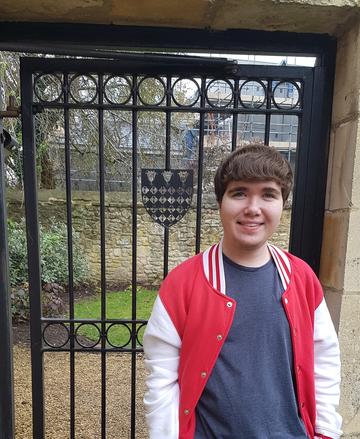
Daniel has just completed his BA History and Politics at Magdalen College . He is a disabled student and the first in his immediate family to go to university. Daniel is a Trustee of Potential Plus UK , a Founding Ambassador and Expert Panel Member for Zero Gravity , a Sutton Trust Alumni Leadership Board Member and a History Faculty Ambassador. Before coming to university, Daniel studied at a non-selective state school, and was a participant on the UNIQ , Sutton Trust , and Social Mobility Foundation APP Reach programmes, as well as being part of the inaugural Opportunity Oxford cohort. Daniel is passionate about outreach and social mobility and ensuring all students have the best opportunity to succeed.
The undergraduate thesis is most probably the longest piece of writing you will have encountered but can be the most rewarding. It gives you the opportunity to follow your passions and conduct historical research that may have never been done before, in a new field or deepening understanding in an area you had already explored. Based on my recent experience here is my advice for how to put it all together:
Choosing a topic
You should begin thinking about this in the January of your second year. Most work on your thesis begins in Trinity (summer term) of your second year, so use Hilary (spring term) to brainstorm what you want to write about. Reflect on which bits of the History degree you have really enjoyed, or any areas you wish to learn more about. Don’t just go for the most obvious topics. 20th century British political topics in some cases have very little unexplored material, so you want to choose an area where you can really add value. Make sure your topic is small enough to be able to do it well in 12,000 words, as that becomes surprisingly few words when you are putting it all together.
You may cover something where there has been some research, but find a new approach or a new angle. In my case, I used the new donations of materials on the Oxford Union’s ‘King and Country’ debate as one way my thesis would be original.
You want to think about the sources you would potentially need to consult, and where they may be stored – no point choosing a topic if the archives are in a language you don’t understand or they are inaccessible. You need to think about logistics and ensure there will be enough material to write about. Not enough primary material can really hold writing back. You don’t need to travel across the world (though it can be very cool) to put it together. There are plenty of subjects that haven’t been explored that could be answered by archives within the University of Oxford. That’s another way to bring value from your thesis; focus on a well-known topic, but in a local context where it may not have been researched.
If you are struggling to choose a topic, don’t worry as there are lectures and sessions to support you throughout the thesis process from the Faculty of History and your college tutor. Not every idea works first time either, so do leave yourself enough time to explore the primary material available.
Introductory reading and your supervisor
At this point it is worth seeing what secondary material is available so you can begin to get a clear idea of what you are writing about. The History Faculty Canvas page is a good place to start. Use reading lists from other papers to put together an introductory reading list for your thesis. You could also attend relevant lectures if you start early enough to gain an understanding of the key ideas in each area.
Don’t worry if you aren’t sure how you want to move forward, your thesis supervisor is there to support with this. They are a tutor who has some experience in the area you are writing about; they have subject specialist knowledge which will be invaluable in driving your thesis forward.
Throughout your thesis writing process you can access up to 5 hours of support (inclusive of time spent responding to email questions as well as meetings), so don’t use all your time up at the start. Leave time for feedback on your thesis draft (I would recommend saving around three hours for this). Talk about your ideas and where you are stuck, and they will be able to suggest relevant reading or sources of primary material.
Ideally confirm your topic and supervisor by the end of Trinity (summer term) of your second year. You can meet before the summer to set out what work you are going to do over the long vacation.
Primary source work
The vast majority of this should be completed over the summer, given you only get Hilary (spring) term of your third year to write up. You are likely to need to spend around 2 weeks conducting primary research, looking at archives or conducting interviews depending on what you are studying. You want to make good notes while doing this and make sure to note down all reference codes for the material you access in the archive. Anything quoted in your thesis will need to be referenced (including page numbers), so note these early to save having to do so again. This is particularly important for sources located a long way away.
You will require ethical approval from your supervisor before you undertake any interviews. This process can take some time, so make sure you submit the request early as you don’t want your thesis timeline to be derailed by this review. Also consider how you will reach those you want to interview; are they likely to want to be involved? What is the best medium to engage with them (online or in-person)? What are the strengths and limitations of such an approach?
While conducting primary source analysis, think back to the question you initially discussed with your supervisor and consider if your enquiry is developing differently. You may find your focus in archival research is slightly different to what you outlined initially. That is fine as long as you can complete a good piece of writing on it.
As you go, begin thinking about the two to three chapters you may break your work into. Also reflect – is there enough material to write about? You don’t want to be going into third year with too much primary source analysis left to do. Keep thinking what you want to cover in your thesis and identify gaps early so you can continue to develop your enquiry.
You will need to submit a short proposal in Michaelmas (autumn term) of your third year. This is signed off by the exam board, to certify your thesis is a viable proposal. By now you should know if there is enough material to cover the topic you want. You can make changes after the submission, but I think it’s a good deadline to see if you are on track. It doesn’t need to be too detailed; suggest a title, list the sources you are consulting and what you are hoping to investigate. Your supervisor or tutors in college can give feedback on this.
Secondary reading
You will already have done some secondary reading as part of choosing a topic, and through your initial meetings with your supervisor. While conducting primary source analysis over the long vacation, it is also advantageous to do some more secondary reading. Secondary reading helps to put sources in context and allows you to see where your work fits in to the wider historical debate. Your thesis may be responding to an author or building upon their work. If possible, you could even reach out to them to get their advice or suggestions for unexplored avenues of enquiry.
It is worth flagging you are unlikely to have any time during Michaelmas (autumn term) to work on your thesis. The earliest you are likely to get back to your thesis is at some point during the Christmas vacation or the 1st week of Hilary (spring term).
You must submit your thesis by midday on Friday of 8th week of Hilary. As you can see the timelines are tight. It is therefore worth finishing any primary source analysis as a priority at the start of term, before devoting a few more weeks to secondary reading. During this time, keep checking in with your supervisor to stay on track.
How long you spend on secondary reading should be determined by how long you think you need for writing; my advice is learn from the Extended Essay that you completed in Michaelmas (autumn term) to know your timings. If it took much longer to write than planned, this needs to be factored into your timings. You don’t want to spend all your time reading if writing is the most challenging aspect. You can also read while writing, as the writing process can expose gaps. So give yourself more time to write than you think you need, and prioritise your reading by where you think you need more knowledge.
You should have a detailed plan for your thesis, breaking it down into two to three chapters and what you want to cover in each chapter. With a long piece of writing, it is easy for the quality to drop in the middle as you lose steam so be aware of this. You want to be selective as you only have 12000 words and referencing counts within that limit. Just like any piece of academic writing, it needs an argument so make sure you have a clear train of thought throughout.
I would advise you start writing by the beginning of fourth week. You ideally want to submit your thesis to your supervisor by the end of fifth week to give time for review. It is likely to take your supervisor a minimum of a week to review your thesis (they may be supervising multiple students), so check when they need it by to ensure you have ample time to make the necessary improvements.
When writing, you may want to write a sketch version first where you write all of your thoughts before adding the detail with references. Make sure your referencing format is consistent and make the work as good as possible so your supervisor’s feedback can be focused on how to get your thesis to the next level rather than simple mistakes. For things like spelling and grammar it is down to you to ensure your thesis is readable.
While it can be tempting to leave writing until the last possible second, you will get your best work by working consistently over a week or two with clear goals. You don’t want to be in the library every waking hour, as this will come through in the quality of what is written.
When working with a supervisor, it is all about communication. If you do find issues while writing your thesis, you can always meet your supervisor to get some steer. Some supervisors like to review it chapter by chapter, so establish how you want to work at the start of Hilary (spring term) and stick to it.
Proofreading and re-drafting
When you receive your supervisor’s feedback, it can be useful to schedule sessions with them to run through it on a granular level. Some supervisors will go through chapter by chapter, others will be steered by your questions.
You will hopefully have at least one or two weeks to make the necessary edits, which could be as drastic as restructuring an entire chapter. It is worth rewriting with time to spare, so you can proofread it to ensure the thesis reads clearly. Do follow the University regulations if you would like others to review your thesis.
The final step is sending it in before the deadline – some students submit up to a week in advance if they are happy with it, where others (like myself) give it a final read on the morning of submission. Make sure to back up on a cloud-based platform so if there are any technical issues you can obtain a recent version.
Writing a thesis can be an enjoyable process, where you get a lot of freedom to work at your own pace on a topic you are interested in. My main piece of advice is don’t let that freedom get you off track, as there is little time to catch up if you do fall behind (particularly during Hilary term). Your thesis is not something to be put off but something to get started on early!
My undergraduate thesis will be published on the Oxford Union Library and Archives website in due course, and a physical copy can also be found within the Oxford Union Library.


- About NuWrite
- Writing Advice
- Engineering & Design
- First-Year Seminars
- Global Health
- 2010 Senior Thesis Prep Guide (B. Zakarin 2010)
- Local Library Collections (for Humanities research) (B. Zakarin 2010)
- solving-problems-in-history-proposal-research
- Electronic Library Resources (2011)
- Science Writing
- Social Science Writing
- Writing for Graduate or Professional School
- Writing Advice for International Students
- Faculty-Only Resources
Writing History Proposals
History thesis writers' proposal guide (2010)
Do's and Don'ts for History Thesis Proposals
Effective proposal writing style in History
History subject specialists at the Library
Sample student history proposals - with annotations
Electronic library sources (NU Library, 2011)
Local library collections

- Contact Northwestern University
- Campus Emergency Information
- University Policies
Northwestern University Library | 1970 Campus Drive, Evanston, IL 60208-2300 | Phone: 847.491.7658 | Fax: 847.491.8306 | Email: [email protected]

Thesis Statements
What is a thesis statement.
Your thesis statement is one of the most important parts of your paper. It expresses your main argument succinctly and explains why your argument is historically significant. Think of your thesis as a promise you make to your reader about what your paper will argue. Then, spend the rest of your paper–each body paragraph–fulfilling that promise.
Your thesis should be between one and three sentences long and is placed at the end of your introduction. Just because the thesis comes towards the beginning of your paper does not mean you can write it first and then forget about it. View your thesis as a work in progress while you write your paper. Once you are satisfied with the overall argument your paper makes, go back to your thesis and see if it captures what you have argued. If it does not, then revise it. Crafting a good thesis is one of the most challenging parts of the writing process, so do not expect to perfect it on the first few tries. Successful writers revise their thesis statements again and again.
A successful thesis statement:
- makes an historical argument
- takes a position that requires defending
- is historically specific
- is focused and precise
- answers the question, “so what?”
How to write a thesis statement:
Suppose you are taking an early American history class and your professor has distributed the following essay prompt:
“Historians have debated the American Revolution’s effect on women. Some argue that the Revolution had a positive effect because it increased women’s authority in the family. Others argue that it had a negative effect because it excluded women from politics. Still others argue that the Revolution changed very little for women, as they remained ensconced in the home. Write a paper in which you pose your own answer to the question of whether the American Revolution had a positive, negative, or limited effect on women.”
Using this prompt, we will look at both weak and strong thesis statements to see how successful thesis statements work.
While this thesis does take a position, it is problematic because it simply restates the prompt. It needs to be more specific about how the Revolution had a limited effect on women and why it mattered that women remained in the home.
Revised Thesis: The Revolution wrought little political change in the lives of women because they did not gain the right to vote or run for office. Instead, women remained firmly in the home, just as they had before the war, making their day-to-day lives look much the same.
This revision is an improvement over the first attempt because it states what standards the writer is using to measure change (the right to vote and run for office) and it shows why women remaining in the home serves as evidence of limited change (because their day-to-day lives looked the same before and after the war). However, it still relies too heavily on the information given in the prompt, simply saying that women remained in the home. It needs to make an argument about some element of the war’s limited effect on women. This thesis requires further revision.
Strong Thesis: While the Revolution presented women unprecedented opportunities to participate in protest movements and manage their family’s farms and businesses, it ultimately did not offer lasting political change, excluding women from the right to vote and serve in office.
Few would argue with the idea that war brings upheaval. Your thesis needs to be debatable: it needs to make a claim against which someone could argue. Your job throughout the paper is to provide evidence in support of your own case. Here is a revised version:
Strong Thesis: The Revolution caused particular upheaval in the lives of women. With men away at war, women took on full responsibility for running households, farms, and businesses. As a result of their increased involvement during the war, many women were reluctant to give up their new-found responsibilities after the fighting ended.
Sexism is a vague word that can mean different things in different times and places. In order to answer the question and make a compelling argument, this thesis needs to explain exactly what attitudes toward women were in early America, and how those attitudes negatively affected women in the Revolutionary period.
Strong Thesis: The Revolution had a negative impact on women because of the belief that women lacked the rational faculties of men. In a nation that was to be guided by reasonable republican citizens, women were imagined to have no place in politics and were thus firmly relegated to the home.
This thesis addresses too large of a topic for an undergraduate paper. The terms “social,” “political,” and “economic” are too broad and vague for the writer to analyze them thoroughly in a limited number of pages. The thesis might focus on one of those concepts, or it might narrow the emphasis to some specific features of social, political, and economic change.
Strong Thesis: The Revolution paved the way for important political changes for women. As “Republican Mothers,” women contributed to the polity by raising future citizens and nurturing virtuous husbands. Consequently, women played a far more important role in the new nation’s politics than they had under British rule.
This thesis is off to a strong start, but it needs to go one step further by telling the reader why changes in these three areas mattered. How did the lives of women improve because of developments in education, law, and economics? What were women able to do with these advantages? Obviously the rest of the paper will answer these questions, but the thesis statement needs to give some indication of why these particular changes mattered.
Strong Thesis: The Revolution had a positive impact on women because it ushered in improvements in female education, legal standing, and economic opportunity. Progress in these three areas gave women the tools they needed to carve out lives beyond the home, laying the foundation for the cohesive feminist movement that would emerge in the mid-nineteenth century.
Thesis Checklist
When revising your thesis, check it against the following guidelines:
- Does my thesis make an historical argument?
- Does my thesis take a position that requires defending?
- Is my thesis historically specific?
- Is my thesis focused and precise?
- Does my thesis answer the question, “so what?”
Download as PDF

6265 Bunche Hall Box 951473 University of California, Los Angeles Los Angeles, CA 90095-1473 Phone: (310) 825-4601
Other Resources
- UCLA Library
- Faculty Intranet
- Department Forms
- Office 365 Email
- Remote Help
Campus Resources
- Maps, Directions, Parking
- Academic Calendar
- University of California
- Terms of Use
Social Sciences Division Departments
- Aerospace Studies
- African American Studies
- American Indian Studies
- Anthropology
- Archaeology
- Asian American Studies
- César E. Chávez Department of Chicana & Chicano Studies
- Communication
- Conservation
- Gender Studies
- Military Science
- Naval Science
- Political Science
- My Account |
- StudentHome |
- TutorHome |
- IntranetHome |
- Contact the OU Contact the OU Contact the OU |
- Accessibility hub Accessibility hub
Postgraduate
- International
- News & media
- Business & apprenticeships
Faculty of Arts and Social Sciences

You are here
- School of Arts & Humanities
- Postgraduate Research
Preparing a History PhD proposal
The carefully thought-out and detailed research proposal to be submitted with the formal application is the product of a sometimes prolonged negotiation with your potential supervisor. The supervisor may be enthusiastic about your project or might advise you to consider a different subject or change your angle on it; they may query aspects of your plan such as its breadth, the availability of primary sources or the extent to which you are familiar with the secondary literature. You may be asked to demonstrate the originality of your research question or be advised to consider applying to another institution which may have more appropriate expertise. During this process you will likely be asked to submit a specimen of written-up historical research, such as your Masters or BA dissertation. The sooner you start developing the structure that is expected in a research proposal, the more productive your exchanges with your potential supervisor will be.
You may find different advice for writing a research proposal across different OU webpages. Given that a research proposal can vary significantly across different disciplines, when applying to the History Department you should follow the guidance provided here.
The research proposal you submit in January should be approximately 1000 words, plus a bibliography, and should contain the following:
A title, possibly with a subtitle
The title should not take the form of a question and it may run to a dozen words or more. Like the title of a book, it should clearly convey the topic you propose to work on. A subtitle may explain the chronological or geographical focus of your work, or the methodological approach you will take. Choosing a title is a good way for focusing on the topic you want to investigate and the approach you want to take.
These are examples of poor titles and topics to research:
- Captain Cook’s Third Voyage
- Women in eighteenth-century England
These would be poor topics to research because they lack a strong question and it is not clear which approach they take to their already well-researched subjects. They are generic or merely descriptive.
Examples of good research topics
- Constructing the Eternal City: visual representations of Rome, 1500-1700
- Rearing citizens for the state: manuals for parents in France, 1900-1950
These projects combine a sharp chronological and geographical focus with a clear indication of how the sources will be analysed to respond to a precise question. In the first case, for example, the premise is that visual representations are critical in the making of a city’s eminence. This indicates the type of sources that will be analysed (paintings, engravings and other visual sources). The chronology is particularly well chosen because in these two centuries Rome turned from being the capital of the Catholic world to becoming the much sought-after destination of the Grand Tour; interesting questions of change and continuity come into focus.
Brief summary of your argument
An acceptable PhD thesis must have a central argument, a 'thesis'. You need to have something to argue for or against, a point to prove or disprove, a question to answer. What goes into this section of the proposal is a statement of your question and the answer you plan to give, even if, for now, it remains a hypothesis.
Why this subject is important
We expect originality in a thesis and so under this rubric we expect you to explain why the knowledge you seek on the subject you propose to work on is important for its period and place, or for historians’ views on its period and place. Finding some early-modern English laundry lists would not suffice on its own to justify writing a PhD thesis about them. But those laundry lists could be important evidence for a thesis about the spread of the Great Plague in London, for example.
Framing your research
Your proposal has to show awareness of other scholarly writing on the subject. This section positions your approach to the subject in relation to approaches in some of those works, summarising how far you think it differs. For instance, you could challenge existing interpretations of the end the Cold War, or you might want to support one historian or another; you could open up a neglected aspect of the debate - say by considering the role of an overlooked group or national government - and perhaps kick-start a debate of your own. All this is to show that you have read into your subject and familiarised yourself with its contours. We don’t expect you to have done all your research at the start, but it is essential for you to show familiarity with the key texts and main authors in your chosen field.
What sources might you need to consult in libraries and archives?
Here you should describe or at least list the primary materials you are likely to use in researching your thesis. This demonstrates your confidence that enough relevant sources exist to support a sustained scholarly argument. Many archival catalogues are available online and can be searched remotely, including The National Archives, the National Archives of Scotland, the National Archives (Ireland), the Public Record Office of Northern Ireland and Archives Wales. You can search the London-based Historical Manuscripts Commission and the National Register of Archives, both of which provide access to local county record offices. Databases such as ‘Eighteenth Century Collections Online’ and the British Library’s ‘British Newspapers Online 1600-1900’ will help you identify and locate relevant sources.
What skills are required to work on the sources you plan to use?
You need to show that you have the linguistic competence to pursue your research. With few exceptions, original sources must be read in the original languages; if the principal historical literature is not in English, you must be able to read it too. Palaeographic problems aren’t confined to ancient writing. You might have to tackle early modern or other scripts that are hard to decipher. Even with fluent German, an applicant baffled by the Gothic script and typeface would flounder without undertaking ancillary study. Training is available at The Open University, or in some circumstances you can be funded to undertake training elsewhere, and you should demonstrate awareness of the skills that you need to acquire.
Do you have the technical competence to handle any data-analysis your thesis may require?
Databases, statistical evidence and spreadsheets are used increasingly by historians in certain fields. If your research involves, say, demographic or economic data, you will need to consider whether you have the necessary IT and statistical skills and, if not, how you will acquire them.
How will you arrange access to the libraries and archives where you need to work?
Although primary sources are increasingly available in digitised form, you should consider that important sources may be closed or in private hands. To consult them may require some travelling and so you should be realistic as to what you will be able to do, particularly if you are applying to study part-time as not all archives are open out of regular office hours.
A bibliography
This should come at the end and include a list of the primary sources you plan to use and the relevant secondary literature on the subject. While you should show that you are on top of recent work (and of important older studies) on the topic, there is no point in having a long list of works only marginally related to your subject. As always, specificity is the best policy.
Please follow this link to see an example of a successful research proposal [PDF].
All this may seem daunting, as if the department is asking you to write a thesis before you apply. But that is not our intention; the advice is to help you perform the necessary spadework before entering the formal application process. Working up a proposal under the headings suggested above will, if your application is successful, save you and your supervisor(s) much time if and when the real work begins.
- Study with Us
- News (OU History Blog)

- @history_ou
Request your prospectus
Explore our qualifications and courses by requesting one of our prospectuses today.
Request prospectus
Are you already an OU student?
Go to StudentHome
The Open University
- Study with us
- Work with us
- Supported distance learning
- Funding your studies
- International students
- Global reputation
- Sustainability
- Apprenticeships
- Develop your workforce
- Contact the OU
Undergraduate
- Arts and Humanities
- Art History
- Business and Management
- Combined Studies
- Computing and IT
- Counselling
- Creative Arts
- Creative Writing
- Criminology
- Early Years
- Electronic Engineering
- Engineering
- Environment
- Film and Media
- Health and Social Care
- Health and Wellbeing
- Health Sciences
- International Studies
- Mathematics
- Mental Health
- Nursing and Healthcare
- Religious Studies
- Social Sciences
- Social Work
- Software Engineering
- Sport and Fitness
- Postgraduate study
- Research degrees
- Masters in Social Work (MA)
- Masters in Economics (MSc)
- Masters in Creative Writing (MA)
- Masters in Education (MA/MEd)
- Masters in Engineering (MSc)
- Masters in English Literature (MA)
- Masters in History (MA)
- Masters in International Relations (MA)
- Masters in Finance (MSc)
- Masters in Cyber Security (MSc)
- Masters in Psychology (MSc)
- A to Z of Masters degrees
- OU Accessibility statement
- Conditions of use
- Privacy policy
- Cookie policy
- Manage cookie preferences
- Modern slavery act (pdf 149kb)
Follow us on Social media
- Student Policies and Regulations
- Student Charter
- System Status
- Contact the OU Contact the OU
- Modern Slavery Act (pdf 149kb)
© . . .
- Request Info
How to Research and Write a Compelling History Thesis

The Importance of Research for Writing a History Thesis
Just as history is more than a collection of facts about past events, an effective history thesis goes beyond simply sharing recorded information. Writing a compelling history thesis requires making an argument about a historical fact and, then, researching and providing a well-crafted defense for that position.
With so many sources available—some of which may provide conflicting findings—how should a student research and write a history thesis? How can a student create a thesis that’s both compelling and supports a position that academic editors describe as “concise, contentious, and coherent”?
Key steps in how to write a history thesis include evaluating source materials, developing a strong thesis statement, and building historical knowledge.
Compelling theses provide context about historical events. This context, according to the reference website ThoughtCo., refers to the social, religious, economic, and political conditions during an occurrence that “enable us to interpret and analyze works or events of the past, or even the future, rather than merely judge them by contemporary standards”.
The context supports the main point of a thesis, called the thesis statement, by providing an interpretive and analytical framework of the facts, instead of simply stating them. Research uncovers the evidence necessary to make the case for that thesis statement.
To gather evidence that contributes to a deeper understanding of a given historical topic, students should reference both primary and secondary sources of research.
Primary Sources
Primary sources are firsthand accounts of events in history, according to Professor David Ulbrich, director of Norwich University’s online Master of Arts in History program. These sources provide information not only about what happened and how it happened but also why it happened.
Primary sources can include letters, diaries, photos, and videos as well as material objects such as “spent artillery shells, architectural features, cemetery headstones, chemical analysis of substances, shards of bowls or bottles, farming implements, or earth or environmental features or factors,” Ulbrich says. “The author of the thesis can tell how people lived, for example, by the ways they arranged their material lives.”
Primary research sources are the building blocks to help us better understand and appreciate history. It is critical to find as many primary sources from as many perspectives as possible. Researching these firsthand accounts can provide evidence that helps answer those “what”, “how”, and “why” questions about the past, Ulbrich says.
Secondary Sources
Secondary sources are materials—such as books, articles, essays, and documentaries—gathered and interpreted by other researchers. These sources often provide updates and evaluation of the thesis topic or viewpoints that support the theories presented in the thesis.
Primary and secondary sources are complementary types of research that form a convincing foundation for a thesis’ main points.
How to Write a History Thesis
What are the steps to write a history thesis? The process of developing a thesis that provides a thorough analysis of a historical event—and presents academically defensible arguments related to that analysis—includes the following:
1. Gather and Analyze Sources
When collecting sources to use in a thesis, students should analyze them to ensure they demonstrate knowledge and understanding of the materials. A student should evaluate the attributes of sources such as their origin and point-of-view.
An array of primary and secondary sources can help provide a thorough understanding of a historical event, although some of those sources may include conflicting views and details. In those cases, the American Historical Association says, it’s up to the thesis author to determine which source reflects the appropriate point-of-view.
2. Develop a Thesis Statement
To create a thesis statement, a student should establish a specific idea or theory that makes the main point about a historical event. Scribbr, an editing website, recommends starting with a working thesis, asking the question the thesis intends to answer, and, then, writing the answer.
The final version of a thesis statement might be argumentative, for example, taking a side in a debate. Or it might be expository, explaining a historical situation. In addition to being concise and coherent, a thesis statement should be contentious, meaning it requires evidence to support it.
3. Create an Outline
Developing a thesis requires an outline of the content that will support the thesis statement. Students should keep in mind the following key steps in creating their outline:
- Note major points.
- Categorize ideas supported by the theories.
- Arrange points according to the importance and a timeline of events addressed by the thesis.
- Create effective headings and subheadings.
- Format the outline.
4. Organize Information
Thesis authors should ensure their content follows a logical order. This may entail coding resource materials to help match them to the appropriate theories while organizing the information. A thesis typically contains the following elements.
- Abstract —Overview of the thesis.
- Introduction —Summary of the thesis’ main points.
- Literature review —Explanation of the gap in previous research addressed by this thesis.
- Methods —Outline how the author reviewed the research and why materials were selected.
- Results —Description of the research findings.
- Discussion —Analysis of the research.
- Conclusion —Statements about what the student learned.
5. Write the Thesis
Online writing guide Paperpile recommends that students start with the literature review when writing the thesis. Developing this section first will help the author gain a more complete understanding of the thesis’ source materials. Writing the abstract last can give the student a thorough picture of the work the abstract should describe.
The discussion portion of the thesis typically is the longest since it’s here that the writer will explain the limitations of the work, offer explanations of any unexpected results, and cite remaining questions about the topic.
In writing the thesis, the author should keep in mind that the document will require multiple changes and drafts—perhaps even new insights. A student should gather feedback from a professor and colleagues to ensure their thesis is clear and effective before finalizing the draft.
6. Prepare to Defend the Thesis
A committee will evaluate the student’s defense of the thesis’ theories. Students should prepare to defend their thesis by considering answers to questions posed by the committee. Additionally, students should develop a plan for addressing questions to which they may not have a ready answer, understanding the evaluation likely will consider how the author handles that challenge.
Developing Skills to Write a Compelling History Thesis
When looking for direction on how to write a history thesis, Norwich University’s online Master of Arts in History program can provide the needed skills and knowledge. The program’s tracks and several courses—taken as core classes or as electives in multiple concentrations—can provide a strong foundation for thesis work.
Master of Arts in History Tracks
In the Norwich online Master of Arts in History program, respected scholars help students improve their historical insight, research, writing, analytical, and presentation skills. They teach the following program tracks.
- Public History —Focuses on the preservation and interpretation of historic documents and artifacts for purposes of public observation.
- American History —Emphasizes the exploration and interpretation of key events associated with U.S. history.
- World History —Prepares students to develop an in-depth understanding of world history from various eras.
- Legal and Constitutional History —Provides a thorough study of the foundational legal and constitutional elements in the U.S. and Europe.
Master of Arts in History Courses
Norwich University’s online Master of Arts in History program enables students to customize studies based on career goals and personal interests through the following courses:
- Introduction to History and Historiography —Covers the core concepts of history-based study and research methodology, highlighting how these concepts are essential to developing an effective history thesis.
- Directed Readings in History —Highlights different ways to use sources that chronicle American history to assist in researching and writing a thorough and complete history thesis.
- Race, Gender, and U.S. Constitution —Explores key U.S. Supreme Court decisions relating to national race and gender relations and rights, providing a deeper context to develop compelling history theses.
- Archival Studies —Breaks down the importance of systematically overseeing archival materials, highlighting how to build historical context to better educate and engage with the public.
Start Your Path Toward Writing a Compelling History Thesis
For over two centuries, Norwich University has played a vital role in history as America’s first private military college and the birthplace of the ROTC. As such, the university is uniquely positioned to lead students through a comprehensive analysis of the major developments, events, and figures of the past.
Explore Norwich University’s online Master of Arts in History program. Start your path toward writing a compelling history thesis and taking your talents further.
Writing History: An Introductory Guide to How History Is Produced , American Historical Association How to Write a Thesis Statement , Scribbr The Importance of Historic Context in Analysis and Interpretation , ThoughtCo. 7 Reasons Why Research Is Important , Owlcation Primary and Secondary Sources , Scribbr Secondary Sources in Research , ThoughtCo. Analysis of Sources , History Skills Research Paper Outline , Scribbr How to Structure a Thesis , Paperpile Writing Your Final Draft , History Skills How to Prepare an Excellent Thesis Defense , Paperpile
Explore Norwich University
Your future starts here.
- 30+ On-Campus Undergraduate Programs
- 16:1 Student-Faculty Ratio
- 25+ Online Grad and Undergrad Programs
- Military Discounts Available
- 22 Varsity Athletic Teams
Future Leader Camp
Join us for our challenging military-style summer camp where we will inspire you to push beyond what you thought possible:
- Session I July 13 - 21, 2024
- Session II July 27 - August 4, 2024
Explore your sense of adventure, have fun, and forge new friendships. High school students and incoming rooks, discover the leader you aspire to be – today.

Have a language expert improve your writing
Run a free plagiarism check in 10 minutes, generate accurate citations for free.
- Knowledge Base
- Starting the research process
- How to Write a Research Proposal | Examples & Templates
How to Write a Research Proposal | Examples & Templates
Published on October 12, 2022 by Shona McCombes and Tegan George. Revised on November 21, 2023.

A research proposal describes what you will investigate, why it’s important, and how you will conduct your research.
The format of a research proposal varies between fields, but most proposals will contain at least these elements:
Introduction
Literature review.
- Research design
Reference list
While the sections may vary, the overall objective is always the same. A research proposal serves as a blueprint and guide for your research plan, helping you get organized and feel confident in the path forward you choose to take.
Table of contents
Research proposal purpose, research proposal examples, research design and methods, contribution to knowledge, research schedule, other interesting articles, frequently asked questions about research proposals.
Academics often have to write research proposals to get funding for their projects. As a student, you might have to write a research proposal as part of a grad school application , or prior to starting your thesis or dissertation .
In addition to helping you figure out what your research can look like, a proposal can also serve to demonstrate why your project is worth pursuing to a funder, educational institution, or supervisor.
| Show your reader why your project is interesting, original, and important. | |
| Demonstrate your comfort and familiarity with your field. Show that you understand the current state of research on your topic. | |
| Make a case for your . Demonstrate that you have carefully thought about the data, tools, and procedures necessary to conduct your research. | |
| Confirm that your project is feasible within the timeline of your program or funding deadline. |
Research proposal length
The length of a research proposal can vary quite a bit. A bachelor’s or master’s thesis proposal can be just a few pages, while proposals for PhD dissertations or research funding are usually much longer and more detailed. Your supervisor can help you determine the best length for your work.
One trick to get started is to think of your proposal’s structure as a shorter version of your thesis or dissertation , only without the results , conclusion and discussion sections.
Download our research proposal template
Receive feedback on language, structure, and formatting
Professional editors proofread and edit your paper by focusing on:
- Academic style
- Vague sentences
- Style consistency
See an example

Writing a research proposal can be quite challenging, but a good starting point could be to look at some examples. We’ve included a few for you below.
- Example research proposal #1: “A Conceptual Framework for Scheduling Constraint Management”
- Example research proposal #2: “Medical Students as Mediators of Change in Tobacco Use”
Like your dissertation or thesis, the proposal will usually have a title page that includes:
- The proposed title of your project
- Your supervisor’s name
- Your institution and department
The first part of your proposal is the initial pitch for your project. Make sure it succinctly explains what you want to do and why.
Your introduction should:
- Introduce your topic
- Give necessary background and context
- Outline your problem statement and research questions
To guide your introduction , include information about:
- Who could have an interest in the topic (e.g., scientists, policymakers)
- How much is already known about the topic
- What is missing from this current knowledge
- What new insights your research will contribute
- Why you believe this research is worth doing
Prevent plagiarism. Run a free check.
As you get started, it’s important to demonstrate that you’re familiar with the most important research on your topic. A strong literature review shows your reader that your project has a solid foundation in existing knowledge or theory. It also shows that you’re not simply repeating what other people have already done or said, but rather using existing research as a jumping-off point for your own.
In this section, share exactly how your project will contribute to ongoing conversations in the field by:
- Comparing and contrasting the main theories, methods, and debates
- Examining the strengths and weaknesses of different approaches
- Explaining how will you build on, challenge, or synthesize prior scholarship
Following the literature review, restate your main objectives . This brings the focus back to your own project. Next, your research design or methodology section will describe your overall approach, and the practical steps you will take to answer your research questions.
| ? or ? , , or research design? | |
| , )? ? | |
| , , , )? | |
| ? |
To finish your proposal on a strong note, explore the potential implications of your research for your field. Emphasize again what you aim to contribute and why it matters.
For example, your results might have implications for:
- Improving best practices
- Informing policymaking decisions
- Strengthening a theory or model
- Challenging popular or scientific beliefs
- Creating a basis for future research
Last but not least, your research proposal must include correct citations for every source you have used, compiled in a reference list . To create citations quickly and easily, you can use our free APA citation generator .
Some institutions or funders require a detailed timeline of the project, asking you to forecast what you will do at each stage and how long it may take. While not always required, be sure to check the requirements of your project.
Here’s an example schedule to help you get started. You can also download a template at the button below.
Download our research schedule template
| Research phase | Objectives | Deadline |
|---|---|---|
| 1. Background research and literature review | 20th January | |
| 2. Research design planning | and data analysis methods | 13th February |
| 3. Data collection and preparation | with selected participants and code interviews | 24th March |
| 4. Data analysis | of interview transcripts | 22nd April |
| 5. Writing | 17th June | |
| 6. Revision | final work | 28th July |
If you are applying for research funding, chances are you will have to include a detailed budget. This shows your estimates of how much each part of your project will cost.
Make sure to check what type of costs the funding body will agree to cover. For each item, include:
- Cost : exactly how much money do you need?
- Justification : why is this cost necessary to complete the research?
- Source : how did you calculate the amount?
To determine your budget, think about:
- Travel costs : do you need to go somewhere to collect your data? How will you get there, and how much time will you need? What will you do there (e.g., interviews, archival research)?
- Materials : do you need access to any tools or technologies?
- Help : do you need to hire any research assistants for the project? What will they do, and how much will you pay them?
If you want to know more about the research process , methodology , research bias , or statistics , make sure to check out some of our other articles with explanations and examples.
Methodology
- Sampling methods
- Simple random sampling
- Stratified sampling
- Cluster sampling
- Likert scales
- Reproducibility
Statistics
- Null hypothesis
- Statistical power
- Probability distribution
- Effect size
- Poisson distribution
Research bias
- Optimism bias
- Cognitive bias
- Implicit bias
- Hawthorne effect
- Anchoring bias
- Explicit bias
Once you’ve decided on your research objectives , you need to explain them in your paper, at the end of your problem statement .
Keep your research objectives clear and concise, and use appropriate verbs to accurately convey the work that you will carry out for each one.
I will compare …
A research aim is a broad statement indicating the general purpose of your research project. It should appear in your introduction at the end of your problem statement , before your research objectives.
Research objectives are more specific than your research aim. They indicate the specific ways you’ll address the overarching aim.
A PhD, which is short for philosophiae doctor (doctor of philosophy in Latin), is the highest university degree that can be obtained. In a PhD, students spend 3–5 years writing a dissertation , which aims to make a significant, original contribution to current knowledge.
A PhD is intended to prepare students for a career as a researcher, whether that be in academia, the public sector, or the private sector.
A master’s is a 1- or 2-year graduate degree that can prepare you for a variety of careers.
All master’s involve graduate-level coursework. Some are research-intensive and intend to prepare students for further study in a PhD; these usually require their students to write a master’s thesis . Others focus on professional training for a specific career.
Critical thinking refers to the ability to evaluate information and to be aware of biases or assumptions, including your own.
Like information literacy , it involves evaluating arguments, identifying and solving problems in an objective and systematic way, and clearly communicating your ideas.
The best way to remember the difference between a research plan and a research proposal is that they have fundamentally different audiences. A research plan helps you, the researcher, organize your thoughts. On the other hand, a dissertation proposal or research proposal aims to convince others (e.g., a supervisor, a funding body, or a dissertation committee) that your research topic is relevant and worthy of being conducted.
Cite this Scribbr article
If you want to cite this source, you can copy and paste the citation or click the “Cite this Scribbr article” button to automatically add the citation to our free Citation Generator.
McCombes, S. & George, T. (2023, November 21). How to Write a Research Proposal | Examples & Templates. Scribbr. Retrieved July 1, 2024, from https://www.scribbr.com/research-process/research-proposal/
Is this article helpful?
Shona McCombes
Other students also liked, how to write a problem statement | guide & examples, writing strong research questions | criteria & examples, how to write a literature review | guide, examples, & templates, what is your plagiarism score.
Have a language expert improve your writing
Run a free plagiarism check in 10 minutes, automatically generate references for free.
- Knowledge Base
- Dissertation
How to Write a Dissertation Proposal | A Step-by-Step Guide
Published on 14 February 2020 by Jack Caulfield . Revised on 11 November 2022.
A dissertation proposal describes the research you want to do: what it’s about, how you’ll conduct it, and why it’s worthwhile. You will probably have to write a proposal before starting your dissertation as an undergraduate or postgraduate student.
A dissertation proposal should generally include:
- An introduction to your topic and aims
- A literature review of the current state of knowledge
- An outline of your proposed methodology
- A discussion of the possible implications of the research
- A bibliography of relevant sources
Dissertation proposals vary a lot in terms of length and structure, so make sure to follow any guidelines given to you by your institution, and check with your supervisor when you’re unsure.
Instantly correct all language mistakes in your text
Be assured that you'll submit flawless writing. Upload your document to correct all your mistakes.

Table of contents
Step 1: coming up with an idea, step 2: presenting your idea in the introduction, step 3: exploring related research in the literature review, step 4: describing your methodology, step 5: outlining the potential implications of your research, step 6: creating a reference list or bibliography.
Before writing your proposal, it’s important to come up with a strong idea for your dissertation.
Find an area of your field that interests you and do some preliminary reading in that area. What are the key concerns of other researchers? What do they suggest as areas for further research, and what strikes you personally as an interesting gap in the field?
Once you have an idea, consider how to narrow it down and the best way to frame it. Don’t be too ambitious or too vague – a dissertation topic needs to be specific enough to be feasible. Move from a broad field of interest to a specific niche:
- Russian literature 19th century Russian literature The novels of Tolstoy and Dostoevsky
- Social media Mental health effects of social media Influence of social media on young adults suffering from anxiety
The only proofreading tool specialized in correcting academic writing
The academic proofreading tool has been trained on 1000s of academic texts and by native English editors. Making it the most accurate and reliable proofreading tool for students.

Correct my document today
Like most academic texts, a dissertation proposal begins with an introduction . This is where you introduce the topic of your research, provide some background, and most importantly, present your aim , objectives and research question(s) .
Try to dive straight into your chosen topic: What’s at stake in your research? Why is it interesting? Don’t spend too long on generalisations or grand statements:
- Social media is the most important technological trend of the 21st century. It has changed the world and influences our lives every day.
- Psychologists generally agree that the ubiquity of social media in the lives of young adults today has a profound impact on their mental health. However, the exact nature of this impact needs further investigation.
Once your area of research is clear, you can present more background and context. What does the reader need to know to understand your proposed questions? What’s the current state of research on this topic, and what will your dissertation contribute to the field?
If you’re including a literature review, you don’t need to go into too much detail at this point, but give the reader a general sense of the debates that you’re intervening in.
This leads you into the most important part of the introduction: your aim, objectives and research question(s) . These should be clearly identifiable and stand out from the text – for example, you could present them using bullet points or bold font.
Make sure that your research questions are specific and workable – something you can reasonably answer within the scope of your dissertation. Avoid being too broad or having too many different questions. Remember that your goal in a dissertation proposal is to convince the reader that your research is valuable and feasible:
- Does social media harm mental health?
- What is the impact of daily social media use on 18– to 25–year–olds suffering from general anxiety disorder?
Now that your topic is clear, it’s time to explore existing research covering similar ideas. This is important because it shows you what is missing from other research in the field and ensures that you’re not asking a question someone else has already answered.
You’ve probably already done some preliminary reading, but now that your topic is more clearly defined, you need to thoroughly analyse and evaluate the most relevant sources in your literature review .
Here you should summarise the findings of other researchers and comment on gaps and problems in their studies. There may be a lot of research to cover, so make effective use of paraphrasing to write concisely:
- Smith and Prakash state that ‘our results indicate a 25% decrease in the incidence of mechanical failure after the new formula was applied’.
- Smith and Prakash’s formula reduced mechanical failures by 25%.
The point is to identify findings and theories that will influence your own research, but also to highlight gaps and limitations in previous research which your dissertation can address:
- Subsequent research has failed to replicate this result, however, suggesting a flaw in Smith and Prakash’s methods. It is likely that the failure resulted from…
Next, you’ll describe your proposed methodology : the specific things you hope to do, the structure of your research and the methods that you will use to gather and analyse data.
You should get quite specific in this section – you need to convince your supervisor that you’ve thought through your approach to the research and can realistically carry it out. This section will look quite different, and vary in length, depending on your field of study.
You may be engaged in more empirical research, focusing on data collection and discovering new information, or more theoretical research, attempting to develop a new conceptual model or add nuance to an existing one.
Dissertation research often involves both, but the content of your methodology section will vary according to how important each approach is to your dissertation.
Empirical research
Empirical research involves collecting new data and analysing it in order to answer your research questions. It can be quantitative (focused on numbers), qualitative (focused on words and meanings), or a combination of both.
With empirical research, it’s important to describe in detail how you plan to collect your data:
- Will you use surveys ? A lab experiment ? Interviews?
- What variables will you measure?
- How will you select a representative sample ?
- If other people will participate in your research, what measures will you take to ensure they are treated ethically?
- What tools (conceptual and physical) will you use, and why?
It’s appropriate to cite other research here. When you need to justify your choice of a particular research method or tool, for example, you can cite a text describing the advantages and appropriate usage of that method.
Don’t overdo this, though; you don’t need to reiterate the whole theoretical literature, just what’s relevant to the choices you have made.
Moreover, your research will necessarily involve analysing the data after you have collected it. Though you don’t know yet what the data will look like, it’s important to know what you’re looking for and indicate what methods (e.g. statistical tests , thematic analysis ) you will use.
Theoretical research
You can also do theoretical research that doesn’t involve original data collection. In this case, your methodology section will focus more on the theory you plan to work with in your dissertation: relevant conceptual models and the approach you intend to take.
For example, a literary analysis dissertation rarely involves collecting new data, but it’s still necessary to explain the theoretical approach that will be taken to the text(s) under discussion, as well as which parts of the text(s) you will focus on:
- This dissertation will utilise Foucault’s theory of panopticism to explore the theme of surveillance in Orwell’s 1984 and Kafka’s The Trial…
Here, you may refer to the same theorists you have already discussed in the literature review. In this case, the emphasis is placed on how you plan to use their contributions in your own research.
You’ll usually conclude your dissertation proposal with a section discussing what you expect your research to achieve.
You obviously can’t be too sure: you don’t know yet what your results and conclusions will be. Instead, you should describe the projected implications and contribution to knowledge of your dissertation.
First, consider the potential implications of your research. Will you:
- Develop or test a theory?
- Provide new information to governments or businesses?
- Challenge a commonly held belief?
- Suggest an improvement to a specific process?
Describe the intended result of your research and the theoretical or practical impact it will have:
Finally, it’s sensible to conclude by briefly restating the contribution to knowledge you hope to make: the specific question(s) you hope to answer and the gap the answer(s) will fill in existing knowledge:
Like any academic text, it’s important that your dissertation proposal effectively references all the sources you have used. You need to include a properly formatted reference list or bibliography at the end of your proposal.
Different institutions recommend different styles of referencing – commonly used styles include Harvard , Vancouver , APA , or MHRA . If your department does not have specific requirements, choose a style and apply it consistently.
A reference list includes only the sources that you cited in your proposal. A bibliography is slightly different: it can include every source you consulted in preparing the proposal, even if you didn’t mention it in the text. In the case of a dissertation proposal, a bibliography may also list relevant sources that you haven’t yet read, but that you intend to use during the research itself.
Check with your supervisor what type of bibliography or reference list you should include.
Cite this Scribbr article
If you want to cite this source, you can copy and paste the citation or click the ‘Cite this Scribbr article’ button to automatically add the citation to our free Reference Generator.
Caulfield, J. (2022, November 11). How to Write a Dissertation Proposal | A Step-by-Step Guide. Scribbr. Retrieved 24 June 2024, from https://www.scribbr.co.uk/thesis-dissertation/proposal/
Is this article helpful?

Jack Caulfield
Other students also liked, what is a dissertation | 5 essential questions to get started, what is a literature review | guide, template, & examples, what is a research methodology | steps & tips.
- Undergraduate
- Department News

Guide to Writing a Public History Thesis with a Public History Component
Nancy K. Berlage August, 2021
Table of Contents
Section 1: public history components.
- Section 2: Sample Theses and Approaches by Practice or Methods or Topica Area
- A. Component Option: Uses a Particular Methodological or Addresses a Public History Pratcie Area
- B. Component Option: Illuminates the ways in which the public comes to understand historical information or interacts with the past
- C. Component Option: Application of research or begins to develop application of research
- D. Component Option: Internship Continuation.
The thesis/article should incorporate a public history component. Types of components are categorized and described below, with accompanying examples.
The thesis should do at least one of the following:
- Demonstrate good knowledge and use of a particular methodology, public history practice area, or topic inherent to public history.
- Show evidence of knowledge of best practices as identified by methods course and/or professional organization.
- Discuss (briefly) the methodology used or practice area drawn upon to accomplish the aim of the thesis. Discussion might include the importance, history, legitimacy, or purpose of the methodology. This discussion is typically situated in the introduction. Discussion can also occur in the chapter or section that uses the methodology.)
A: Component Option: Uses a Particular Methodology or Addresses a Public History Practice Area
The public history program offers methods and practice field courses that can provide a frame for the thesis. The methods and practice areas can shape the whole thesis or chapters and sections can focus on application of the method to the topic.
The entire thesis/article does not need to be grounded in the methodology. For example, a thesis might draw on material culture or oral history methods in only one chapter/section.
Suggested Methods & Practice Areas
- Architectural History
- Community Engagement Cultural Landscapes

Cultural Resource Management
- Digital History
- Heritage Tourism
- Immediacy of Topic that has contemporary resonance and has potential for current impact Interpretation and Public Programming
- Local and Community History Material Culture
- Memory Studies Museum Practice Oral History Preservation
- Public History Administration of Historical or non-profit entities
- Diversity and Inclusion
B: Component Option: Illuminates the ways in which the public comes to understand historical information or interacts with the past
The thesis helps illuminate the ways in which a public comes to understand historical information or interacts with the past.
- Analysis of a park’s public programming on a particular topic and change over time.
- Analysis of the development of a local history society and what it chose to include or exclude from the narratives it promoted.
C: Component Option: Application of research or begins to develop application of research
Keeping questions about interpretation and ideas about practical applications of thesis research at the forefront can help develop competency in practice areas. It can open doors to careers and professional contacts. And it can provide a set of skills and knowledge that can be listed on the resume.
- Makes recommendations (typically in the last chapter or section), on how to engage the public on the historical findings of the thesis. Or, how to improve an existing presentation, e.g., at a park, museum, or site, on the topic examined by the thesis.
- Discusses specific suggestions for public outreach on the topic, perhaps through digital exhibit, museum, signage, community meetings, etc.
- Prepares pop-up exhibit and describes the process in a chapter or section.
- Develops suggestions for a preservation plan.
- Suggestions for future public programming and interpretive practices.
- Analyzes or develops a new interpretation of a landscape following appropriate methodology.
- Writes a grant proposal related to thesis findings –as a chapter or appendix.
- Writes text of an exhibit related to thesis findings—as a chapter.
- Suggests archival or records management practices in creating a new physical or on-line collection related to the topic and discussed the methodology and problems for doing so in the practice area.
D: Component Option: Internship Continuation
The topic and approach can develop out of an internship or project with a constituency, stakeholder, or community beyond the academy. The student continues and expands the project on their own, or they work with the organization to develop a product—to the extent the chair advises.
- A student who worked at a National Battlefield writes a thesis on how the National Park Service has interpreted that battle, paying attention to change over time.
- A student who helped collect oral histories for a site continues and elaborates the project in conducting, analyzing, curating additional oral histories.
- A student who assisted with an exhibit on the history of education at a local museum writes a thesis on how museums nationwide or locally interpret the history of education and then gives suggestions for improvement.
- A student who worked for a history museum in Austin writes about how the museum handled a controversy.
- A student who interned on the preservation of an adobe building writes a history of how Portland cement came to replace lime plaster as an outer coating on adobe buildings in the 1930s.
- A student who interned at a historic site conducts research and writes a comprehensive guide for new interpretations of subjects previously ignored by the site.
- A student who worked at a national historic site that included a Civil War battlefield writes on the significance of women soldiers in the Civil War and suggests public interpretation and/or programming.
- I student who interned at an archive writes a history of a topic based on an archival collection they processed.
- A student who wrote a history of a site for the National Park Service turns one chapter— based on original research on a hitherto unknown part of that history—into an article.
Section 2: Sample Theses and Approaches by Practice or Methods or Topical Area
Architecture, cultural landscapes, digital; spatial, heritage, tourism.
- Interpretation & Public Programming
Local History and Community History
Material culture, memory and film, military and public history.
- Military History and Cultural Landscape & CRM
Museums: Pop-up Exhibit
Music and application, oral history, preservation, race: public history and heritage, section ii: sample theses and approaches by practice or methods or topic area.
Theses were completed at leading public history programs and incorporate a public history component. Abstracts and hyperlinks.
- Mosley, Keneisha Diane. “ Volunteer Traditions: Neoclassical Architecture and Its Racial Impact on Fraternity and Sorority Houses at the University of Tennessee ,” 2021.
- Gamble, Bonnie L. " The Nashville and Chattanooga and St. Louis Railroad 1845-1880: preservation of a railroad landscape .” MTSU MA Thesis, 1993.
- Fredericks, Katelyn V. " Back to the land and all its beauty": managing cultural resources, natural resources, and wilderness on North Manitou Island, Sleeping Bear Dunes National Lakeshore, Michigan ." MA Thesis, IUPUI, 2014.
- Ramsey, Ginger. " Cedars of Lebanon State Park: a preservation plan ." MA Thesis, MTSU,1999.
- Schneider, Sarah. “ Searching for Home at Château de la Guette and Beyond: Social and Spatial Dimensions of Jewish German and Austrian Children's and Spatial Dimensions of Jewish German and Austrian Children's Journey to Flee Nazi Persecution via Children's Homes in France .” MA Thesis, University of Central Florida, 2018.
- Laney, Mackenzie Elizabeth. “ Doing Digital History as a Public Historian: The Implications and Uses of the Growing Digital History Field For Public History .” BA Thesis, Central Florida University, 2018.
- Bailey, Heather. Hillbilly skits to Buford sticks: sustainable heritage tourism in Tennessee . MA Thesis, MTSU.
- McMahan, Andrew Wayne. “ Urgent and Necessary”: Tennesseans and Their Competing Visions of the Interstate System .
- Morrill, Benjamin. Public History and America's Pastime: The Use of History and Sports Heritage in Marketing and Community Relations in Minor League Baseball in Tennessee .
- O'Dell, Joey Lena. VULNERABILTY DURING COVID-19: AN ORAL HISTORY PROJECT .
- Stringer, Mary Kate. Enriching the Public History Dialogue: Effective Museum Education Programs for Audiences with Special Needs . MA Thesis, MTSU.
Interpretation & Public Programming
- Allison, David B. “ Entertaining the Public to Educate the Public at Conner Prairie: Prairietown 1975- 2006 ." IUPUI, MA Thesis, 2010.
- Akins, Martha D. " Implementation of heritage education at Historic Carnton Plantation ." MTSU MA Thesis, 2000.
- Highfield, Elaura. Public History and the Fractured Past: Colonial Williamsburg, the Usable Past, and the Concept of an American Identity . MA Thesis, MTSU, 2014.
- Andrews, Jenny. Public History to Public Policy: Using Historic Resources to Inform Park Interpretation and Community Preservation . MA Thesis, MTSU.
- Bailey, Heather L. “ Conflict and tension: saving the history of Middle Tennessee villages .” MTSU MA Thesis, 2005.
- Knight, Callie. Nashville Copts: Cultural Identity, Community Collaboration, and Cultural Institutions .
- Receveur, Garrett Wayne. “ Commemorating Indiana at the 1916 Statehood Centennial Celebrations: An Examination of the Memory of Colonization and its Lingering Effects on the Indiana State Park System .” IUPUI, MA Thesis, 2021.
- Wernicke, Rose. " The Farmland Opera House: culture, identity, and the corn contest ." IUPUI, MA Thesis, 2013.
- Badgley, Benjamin Joseph. " The making of a historical consciousness in Henry County, Indiana: a case study of the Henry County Historical Society, 1887-1950 .” IUPUI, MA Thesis.
- Abdallah, Jaryn Elizabeth. More to the Story: Historical Narratives and the African American Past in Maury County, Tennessee .
- Betterly, Richard. Using historic rural church cemeteries as a material culture resource in heritage education .
- Rainesalo, Timothy C. “ Senator Oliver P. Morton and Historical Memory of the Civil War and Reconstruction in Indiana .” IUPUI, MA Thesis.
- Kane, Alissa. “ Countering the Lost Cause: Examining Civil War Commemoration in Murfreesboro, Tennessee .” MA Thesis, MTSU.
- Haire, Stefanie Morgan. “ Memorialization of Forgotten Steps: Native American Participation in the American Civil War .” MA Thesis, MTSU.
- Jackson, Danielle. “ REPRESENTATIONS OF GENOCIDE: A CRITICAL EXAMINATION OF THE SCHOLARLY AND PUBLIC INTERPRETATIONS OF THE CONESTOGA MASSACRE .” MA Thesis, MTSU.
- Born, Jennifer D. “ A Survey of Indiana Military Monuments .” MA Thesis, IUPUI, 2000.
- Seager, Brenda Mary. “ Memory Retrieved: The Memorial for the Murdered Jews of Europe .” MA Thesis, IUPUI, 2004.
- Rainesalo, Timothy C. “ Senator Oliver P. Morton and Historical Memory of the Civil War and Reconstruction in Indiana .” MA Thesis, IUPUI.
- Rippel, Elena Marie. “ Festive expressions of ethnicity: national German-American festivals in Indianapolis at the turn of the twentieth century .” MA Thesis, IUPUI, 2014.
- Abercrombie, Brent S. " How America Remembers: Analysis of the Academic Interpretation and Public Memory of the Battle of Tippecanoe ." MA Thesis, IUPUI, 2011.
- Receveur, Garrett Wayne. “ Commemorating Indiana at the 1916 Statehood Centennial Celebrations: An Examination of the Memory of Colonization and its Lingering Effects on the Indiana State Park System .” MA Thesis, IUPUI, 2021.
- May, Cinda Ann. “ On Becoming a Valued Member of Society: The Childhood of Famous Americans Series and the Transmission of Americanism, 1932-1958 .” MA Thesis, IUPUI, 2005.
- Johnson, Nicholas K. “HBO and the Holocaust: conspiracy, the historical film, and public history at Wannsee .” MA Thesis, IUPUI, 2016.
- Mitchell, Amber N. " Playing patsy: film as public history and the image of enslaved African American women in post-civil rights era cinema .” IUPUI, MA Thesis, 2017.
- Savarino, Malia Dorothy. “ Historical Film and the Assassination of President Lincoln: The Prisoner of Shark Island (1936) and The Lincoln Conspiracy (1977) .” IUPUI, MA Thesis.
- Pfeiffer, David Michael. " From Revolutionary War heroes to navy cruisers: the role of public history and military history in Vincennes, Indiana ." MA Thesis, IUPUI, 2012.
- Hankins, Melanie Barbara. " Fort Benjamin Harrison: From Military Base to Indiana State Park ." MA Thesis, IUPUI, 2020.
- Jones, Amanda Christine. “ The Greatest Outrage: Military Park, Long Hospital, and Progressive Era Notions of Urban Space .” MA Thesis, IUPUI.
- Lynch, Doria Marie. “ The Labor Branch of the Office of Strategic Services: An Academic Study from a Public History Perspective .” MA Thesis, IUPUI.
Military History and Cultural Landscape & CRM
- Quigg, Gary Francis. “ JB-2: America's First Cruise Missile .” MA Thesis, IUPUI.
- Miller, Brittany L. A MECHANISM OF AMERICAN MUSEUM-BUILDING PHILANTHROPY, 1925-1970 .” IUPUI, MA Thesis, 2010.
- Wilson, Morgan Lee. " Threshing the Grain: Revealing the Lived Experience of a Late Nineteenth Century Hoosier Farm Woman to an Early Twenty First Century Audience ." MA Thesis IUPUI.
- Sproul, Kate. “ Interpreting Grassmere's Enslaved Community: Archaeological Approaches to Public History at the Nashville Zoo .” MA thesis, MTSU.
- Peterson, Erik C. " Playing, learning, and using music in early Middle Indiana ." MA Thesis, IUPUI, 2014.
- Crawford-Lackey, Katherine. “ PUBLIC PROTEST AS A CLAIM TO CITIZENSHIP: TWENTIETH-CENTURY OCCUPATIONS OF WASHINGTON, D.C. AND THEIR ROLE IN PUBLIC MEMORY .” MA Thesis, MTSU.
- Cole, Ashley Daniel. “ I WANTED TO BE JUST WHAT I WAS:” DOCUMENTING QUEER VOICES IN THE SOUTH .” MA Thesis, MTSU.
- Alley, Jesse L. " Buffalo Valley School: preservation and adaptive reuse in a rural Tennessee community . MTSU MA Thesis, 2011.
- Benac, David. “ Hoosiers, Timber, and Conservation: The Timber Industry's Role in Indiana's Conservation Movement, 1890 to 1920 .” IUPUI, MA Thesis
- Brady, Carolyn M. “ The Transformation of a Neighborhood: Ransom Place Historic District, Indianapolis, 1900-1920 .” MA Thesis, IUPUI .
- Holder, Laura Stewart. " Natchez Street then and now: the evolution and preservation of Franklin's historic African American neighborhood ." MTSU MA Thesis, 2005.
- Price, David L. " City planning and historic preservation in Nashville, Tennessee, 1931-1985 ." MTSU MA Thesis, 2005.
- Reichard, Ruth Diane. “I nfrastructure, Separation, and Inequality: The Streets of Indianapolis Between 1890 and 1930 .” IUPUI, MA Thesis.
- Ryan, Jordan B. " How Others Have Built": A Sketch of Indianapolis Construction and Demolition Patterns ." IUPUI, MA Thesis, 2018.
- Stewart, Taylor. True to Small Town Roots: A Case Study of Adaptive Reuse in Prattville, Alabama .
- Gautreau, Abigail Rose. The Past is Political: Race, Cultural Landscapes, and the Case for Community- Driven Heritage in Selma and South Africa . PhD Diss.
- How It Works
- PhD thesis writing
- Master thesis writing
- Bachelor thesis writing
- Dissertation writing service
- Dissertation abstract writing
- Thesis proposal writing
- Thesis editing service
- Thesis proofreading service
- Thesis formatting service
- Coursework writing service
- Research paper writing service
- Architecture thesis writing
- Computer science thesis writing
- Engineering thesis writing
- History thesis writing
- MBA thesis writing
- Nursing dissertation writing
- Psychology dissertation writing
- Sociology thesis writing
- Statistics dissertation writing
- Buy dissertation online
- Write my dissertation
- Cheap thesis
- Cheap dissertation
- Custom dissertation
- Dissertation help
- Pay for thesis
- Pay for dissertation
- Senior thesis
- Write my thesis
How to Write the Perfect Thesis Proposal

Before you begin your thesis or dissertation, you will have to prepare a proposal. A thesis proposal is a roadmap to your actual research. It outlines the topic and acts as a guide to understand why the issues you wish to address in your thesis, warrant research.
How to Write a Thesis Proposal
The first step is to understand how to write a thesis proposal. There are a few simple steps that you can follow:
- Zero down on your topic: You may have a sense of what you wish to write about. However, you need to make sure that the topic is of interest in your field. It should answer important questions and must have a good scope for content collection.
- Example – You may want to write on genocides in history and Norman Naimark is one of your favorite authors.
- Make a working title: The length of your working title should be more than the final title. It should also be more descriptive so as to have a better discussion with your professor or committee.
Example – Actual title – ‘Genocides in History’. Working title – ‘Genocides in History that Shaped the World’
- Review the available literature: This will help you know about the existing research on your topic and help determine the scope for further research.
- Make an outline of your proposal: Your thesis proposal sample must list all the important points that you wish to include in your proposal.
Example – include all preliminary research, create appendices for secondary information, literature review and more.
- Create headings: Each section of your thesis proposal should be broken down into sub-topics. This helps present vital information in a better manner.
Example – when you are writing the subtopics for the methodology make a list of books that you will refer to, why you think the topic is important and how your will approach various subjects.
- Put it all together: Use the thesis proposal format mentioned below and put together your thesis proposal. Make sure you include your timeline, theoretical approach, and methodology as well.
Structure of a Thesis Proposal
There is a set thesis proposal structure that students must adhere to while writing their proposal. You can also refer to a thesis proposal template for better understanding:
Title page: Every thesis proposal example will include a title page which includes a descriptive title. It also includes information like the name of the author, name of the mentor, date, name of the institution etc. The title must reflect the subject, the proposed method of research and the lessons that one will learn from it. Abstract: In the beginning of every sample thesis proposal, you will notice a short 200 word paragraph summarizing the thesis. This is known as the abstract. It includes the title, the key statement, the methods used to address the subject and the implications of the research once completed. Table of Contents: This is one of the most important elements of the thesis proposal. It will provide a complete thesis proposal outline, listing all the headings and subheadings. Introduction: The introduction must be catchy and impressive. This will urge your reader to explore your ideas further. The background of the topic and a broad perspective of the research must be provided in this introduction. Key questions: The questions that you wish to answer in the thesis must be listed. When a reader views these questions in the thesis proposal example, it will show the direction that you intend to take with your research. Literature review: The literature review provides a description of all the sources that you wish to use in your research. This shows the information that you have already accumulated for your research. It also indicates the future goals of the thesis. Methodology: This section describes all the methods that you wish to make use of in the thesis paper in order to answer the key questions. Conclusion: When you are writing a thesis proposal, pay attention to the conclusion. This section indicates the possible research of your research, the contributions it will make to your field and the expected accuracy of your results. Thesis proposal summary: This is the section where the goals of your proposal are stated in brief. Bibliography: You must provide a list of all the references that you will make use of for your research. Remember that the bibliography must be written according to the writing style required for your thesis, be it APA or MLA writing style.
How Long Should a Thesis Proposal Be?
A thesis proposal should not be more than 8 pages long.
The idea of the thesis proposal is to make the purpose of the research clear. It should provide a clear idea about how you wish to go about your research. There is no need to delve into the details when you are writing the proposal. These eight pages exclude the bibliography.
Tips on How to Write a Good Thesis Proposal
Here are five tips to help you make a convincing thesis proposal:
Your thesis proposal must be solid, yet flexible. Try to incorporate as many important elements as possible to prove that the subject you have chosen warrants further research. However, be open to changes and feedback. That is the whole idea of the proposal. Make sure you choose a subject that excites you. This will urge you to dig deeper and gather as much information as possible. Your subject should be a good balance between novelty and already established ideas about the subject. Do you have enough material to prepare the thesis in the given period of time? This is the most important question that you should answer. The questions listed in your thesis proposal should be open-ended, yet well defined. Allow some scope for discussion and debate. Avoid straightforward, “Yes and No” questions. Choose subjects that will help you develop marketable skills. Think of subspecialties in your field. Select a subject that will help you explore these subspecialties in your field. This will help you develop skills that will help you land better jobs and open more opportunities for you in the future. This approach is most likely to convince your professor and university committee about the scope of your thesis.
If you are looking for writing help or are confused about how to write a thesis proposal sample, get in touch with us today . We help students across various areas of study create the best proposals that make a good impression.

Leave a Reply Cancel reply
Your email address will not be published. Required fields are marked *
Comment * Error message
Name * Error message
Email * Error message
Save my name, email, and website in this browser for the next time I comment.
As Putin continues killing civilians, bombing kindergartens, and threatening WWIII, Ukraine fights for the world's peaceful future.
Ukraine Live Updates
38+ SAMPLE History Proposal in PDF | MS Word
History proposal | ms word, 38+ sample history proposal, what is a history proposal, ideas for a history proposal, tips to read history better, how to create a history proposal, how do you write a history proposal, what should a history research proposal include, what are the main sources of historical research.

History Thesis Proposal
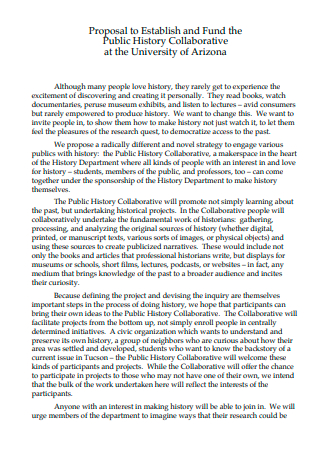
Public History Collaborative Proposal
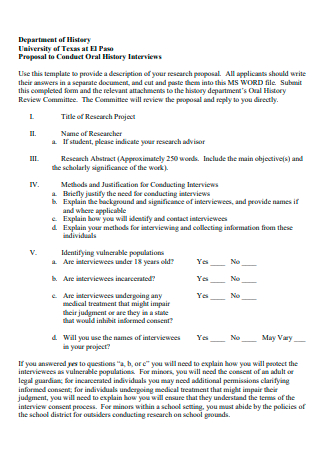
Department of History Proposal
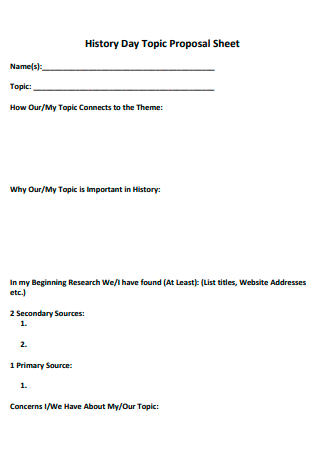
History Day Topic Proposal Sheet
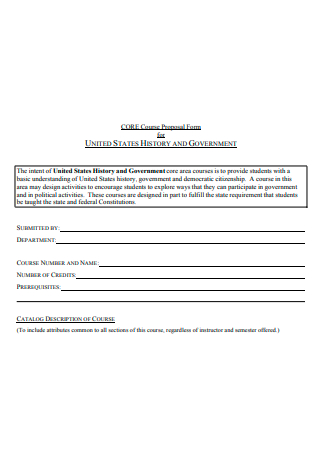
History and Government Course Proposal Form
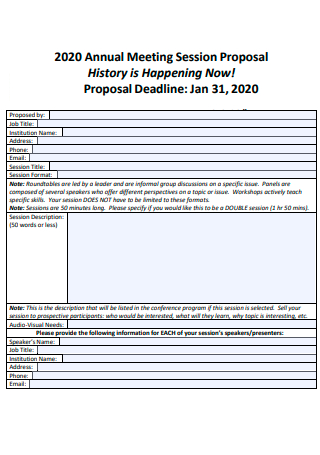
History Annual Meeting Session Proposal
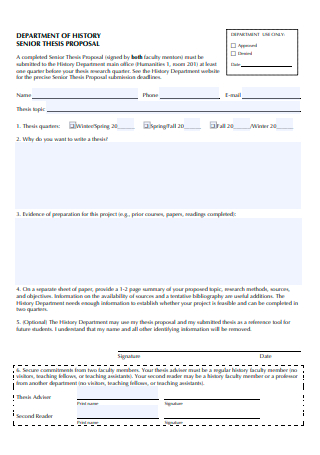
Depatrtment of History Senior Thesis Proposal
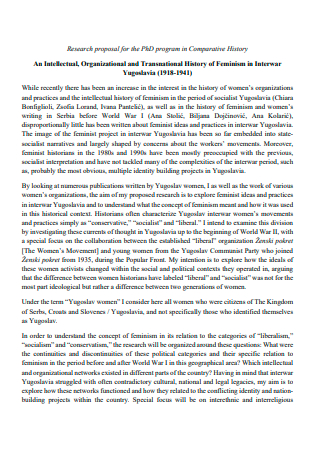
Comparative History Research Proposal
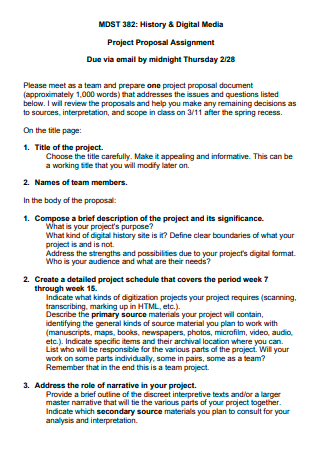
History and Digital Media Project Proposal Assignment
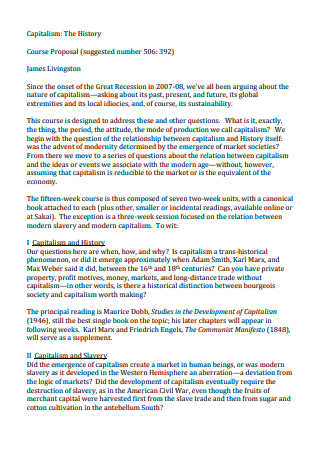
History Course Proposal
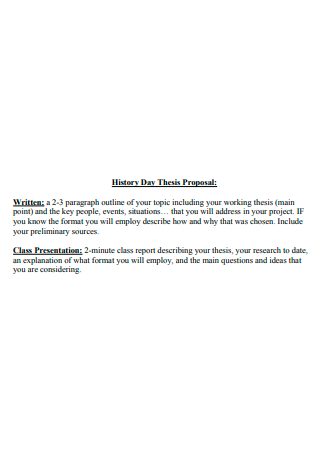
History Day Thesis Proposal
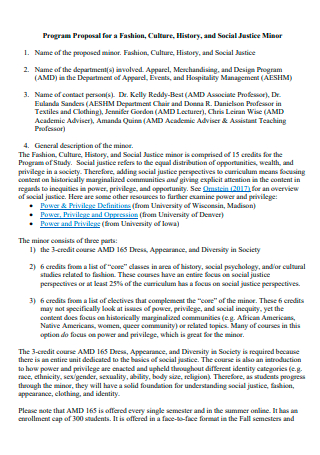
History Program Proposal
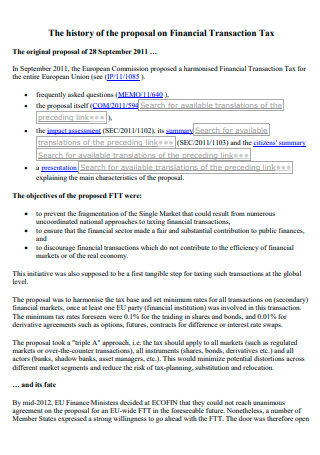
Financial Transaction Tax History Proposal
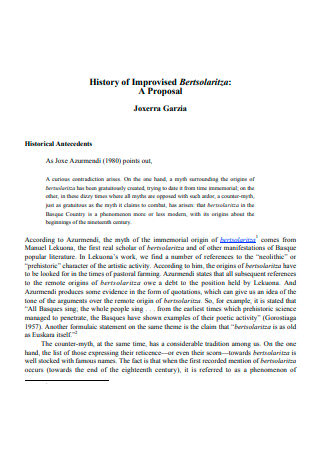
History Proposal in PDF
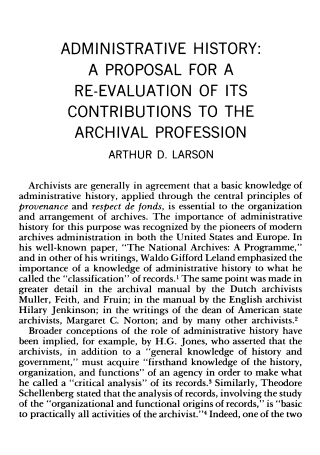
Administrative History Proposal
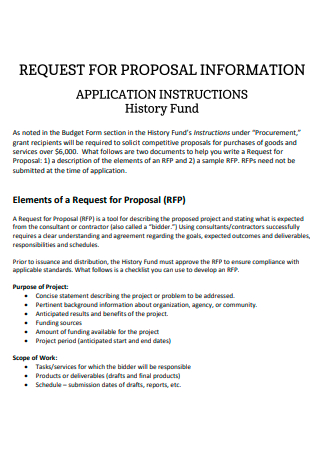
History Fund Proposal
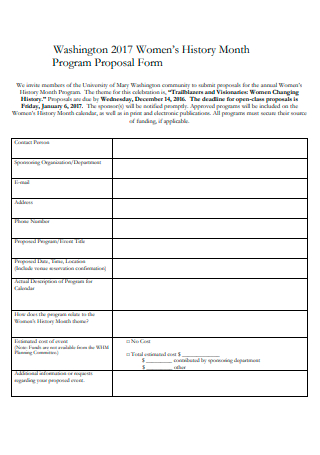
History Month Program Proposal Form

History Press Publication Proposal
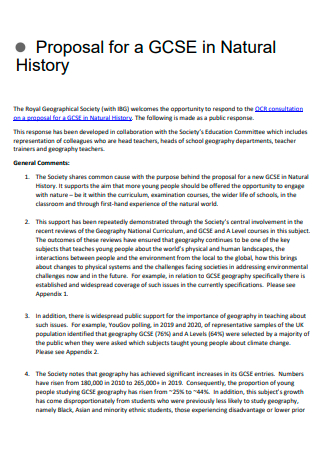
Natural History Proposal
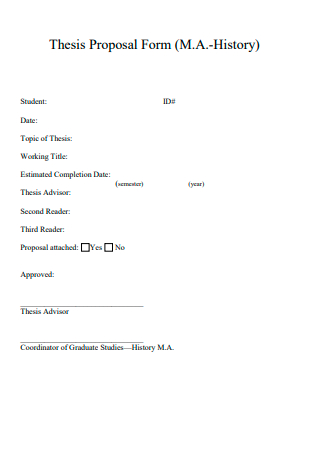
History Thesis Proposal Form
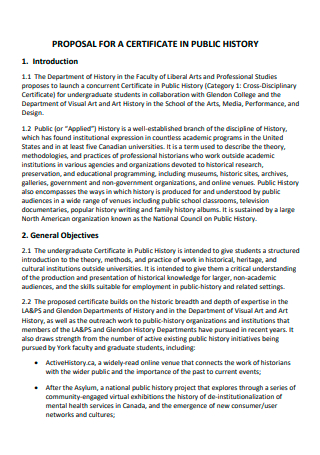
Public History Proposal For a Certificate
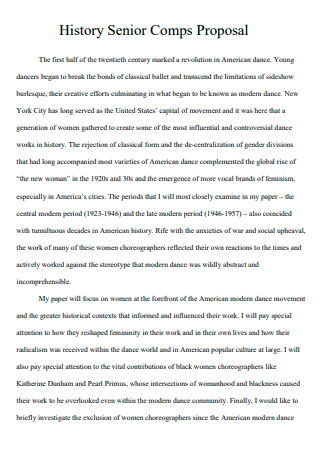
History Senior Proposal
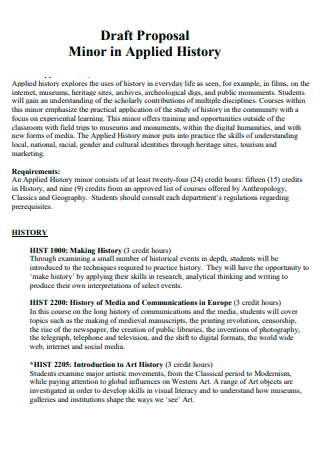
Minor in History Proposal

Basic History Proposal
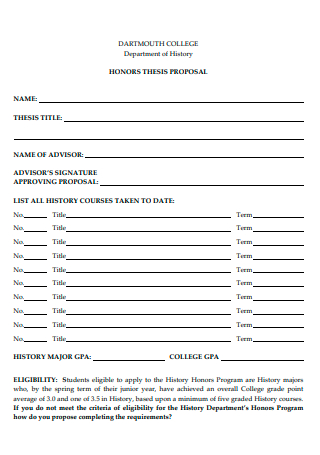
History Honors Thesis Proposal
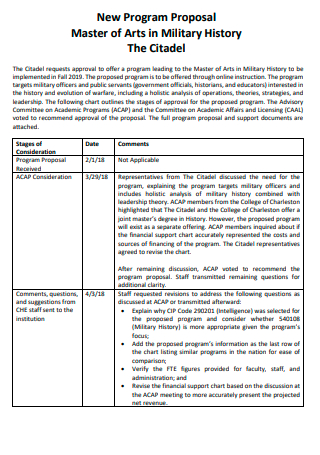
Master of Arts in Military History Program Proposal
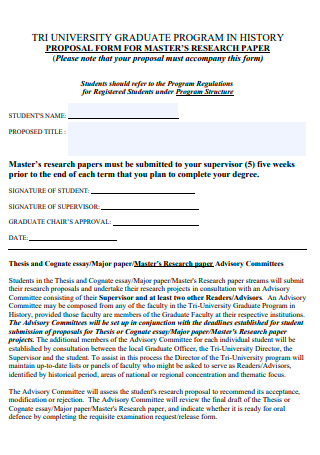
Graduate Program History Proposal Form For Master Research
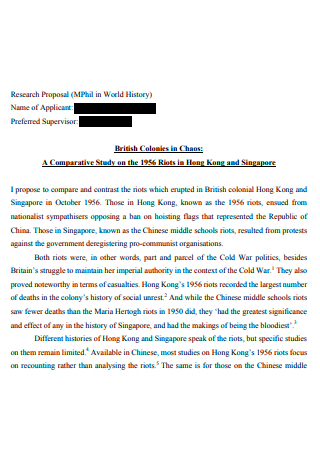
World History Research Proposal
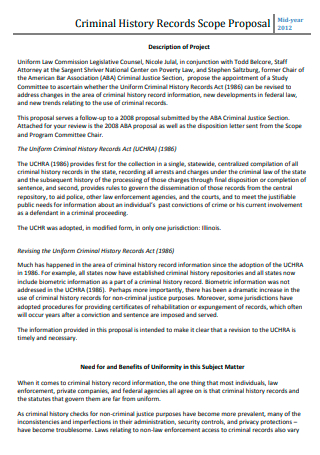
Criminal History Records Scope Proposal

Family Water Alliance History Project Proposal
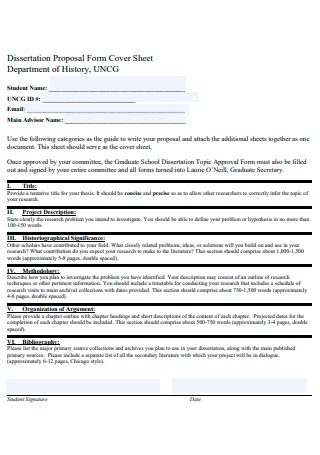
History Disseration Proposal Form
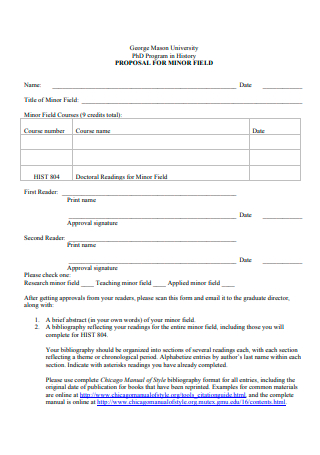
Program in History Proposal For Minor Field
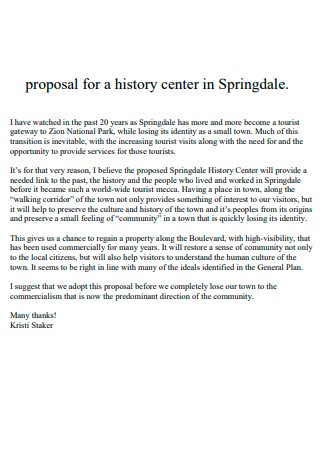
History Center Proposal
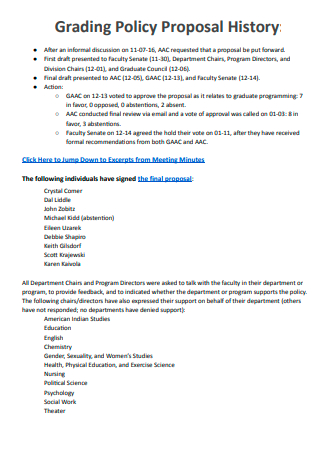
History Proposal Grading Policy
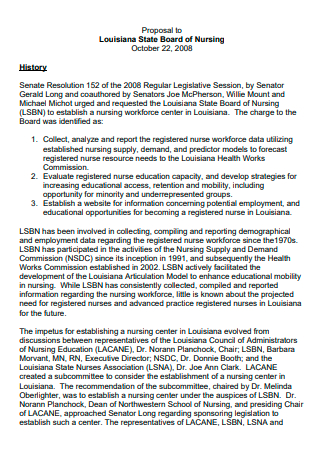
Board of Nursing History Proposal
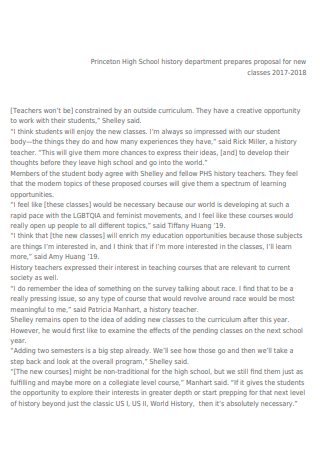
High School History Proposal

History and Visual Culture Dissertation Proposal
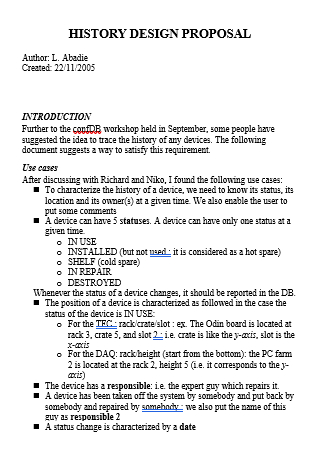
History Design Proposal
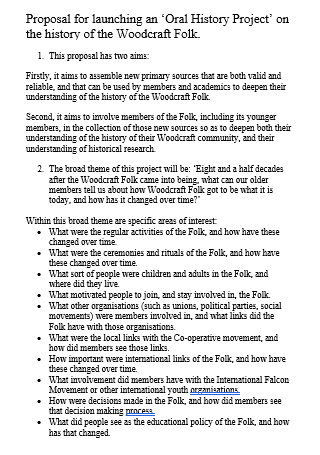
Oral History Proposal
Step 1: introduction, step 2: research problem , step 3: review of related literature , step 4: research design and methods, share this post on your network, you may also like these articles, title project proposal.
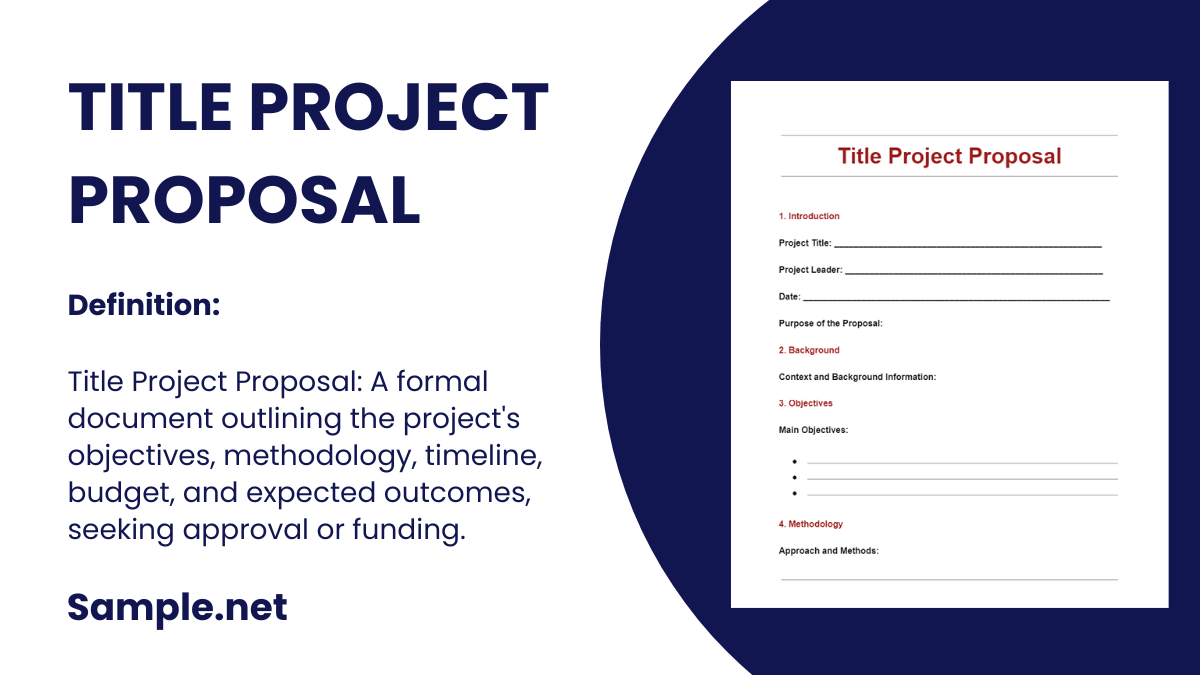
In this comprehensive guide, we will explore the essentials of crafting an effective Title Project Proposal. Whether you're applying for a grant, pitching a new project, or seeking approval…
25+ SAMPLE Construction Company Proposal in MS Word

Navigating the intricate world of construction demands a seasoned company with a proven track record. Our comprehensive guide on the Construction Company Proposal is your blueprint to understanding the…
browse by categories
- Questionnaire
- Description
- Reconciliation
- Certificate
- Spreadsheet
Information
- privacy policy
- Terms & Conditions

IMAGES
VIDEO
COMMENTS
Let's get those out of the way right now. • A senior thesis must be an original research project of no fewer than 10,000 words and no more than 20,000 words, not counting notes and bibliography. Students may petition the Director of Studies to write a thesis that exceeds 20,000 words.
Writing a thesis is also important because it will allow me to dedicate an extended period of time to a very specific subject. I enjoy historical research and want the satisfaction of knowing that I thoroughly understand the intricacies and nuances of a particular topic, even though it may be a small fraction of a larger whole.
Originally written for History students writing proposals for a senior honors thesis, but applicable to all proposal writing ... This is appropriate in a research proposal because you will be admitted to the Senior Thesis Program and/or awarded a summer grant. Well-organized paragraphs and headings.
om writing in other academic disciplines. As you compose or revise your. history paper, consider t. ese guidelines:s Write in the past tense. Some students have been taught to enliven their prose by wr. ting in the "literary present" tense. Such prose, while acceptable in other discip.
Choosing a topic. You should begin thinking about this in the January of your second year. Most work on your thesis begins in Trinity (summer term) of your second year, so use Hilary (spring term) to brainstorm what you want to write about. Reflect on which bits of the History degree you have really enjoyed, or any areas you wish to learn more ...
The Research Proposal. They Said "Yes!": The Research ProposalA research proposal, also known as a research prospectus, describes a project's. intended course and its intellectual merit. In the process, you are expected to explain its historiographica. context and how you intend to complete it. A well-written proposal should demonstrat.
Thesis Committee (Print the names of the one director and two readers that you most prefer. This should be drafted in consultation with the Thesis Director & Program Director) Director. Reader 1. Reader 2. Thesis Statement and argument (In 1-2 sentences, state your argument about your topic and then describe how you will prove your argument.)
History 99: Senior Thesis Seminar Course jectivesob The Senior Thesis Writers' Seminar has a twofold purpose . The first is to provide you with practi-cal guidance and writing advice as you complete a senior thesis in History . We will discuss many of the common hurdles and pitfalls that past students have
Discuss your resource requirements for the successful completion of your thesis including travel costs, software, photocopying or other necessary research resources with your supervisors and include a brief statement of those needs in the full proposal. Preliminary Bibliography List: a) all the sources you used when preparing your proposal, and
This information is intended to serve as a general guide to outlining a dissertation proposal in History. Specific expectations may vary by committee. You should always ascertain the requirements of your specific advisor/committee members before completing the dissertation proposal.
Writing History Proposals. History thesis writers' proposal guide (2010) Do's and Don'ts for History Thesis Proposals. Effective proposal writing style in History. History subject specialists at the Library. Sample student history proposals - with annotations. Electronic library sources (NU Library, 2011) Local library collections.
Your thesis statement is one of the most important parts of your paper. It expresses your main argument succinctly and explains why your argument is historically significant. Think of your thesis as a promise you make to your reader about what your paper will argue. Then, spend the rest of your paper-each body paragraph-fulfilling that promise.
The research proposal you submit in January should be approximately 1000 words, plus a bibliography, and should contain the following: A title, possibly with a subtitle. The title should not take the form of a question and it may run to a dozen words or more. Like the title of a book, it should clearly convey the topic you propose to work on.
2. Develop a Thesis Statement. To create a thesis statement, a student should establish a specific idea or theory that makes the main point about a historical event. Scribbr, an editing website, recommends starting with a working thesis, asking the question the thesis intends to answer, and, then, writing the answer.
Writing a proposal or prospectus can be a challenge, but we've compiled some examples for you to get your started. Example #1: "Geographic Representations of the Planet Mars, 1867-1907" by Maria Lane. Example #2: "Individuals and the State in Late Bronze Age Greece: Messenian Perspectives on Mycenaean Society" by Dimitri Nakassis.
Research proposal examples. Writing a research proposal can be quite challenging, but a good starting point could be to look at some examples. We've included a few for you below. Example research proposal #1: "A Conceptual Framework for Scheduling Constraint Management".
Step 1: Coming up with an idea. Step 2: Presenting your idea in the introduction. Step 3: Exploring related research in the literature review. Step 4: Describing your methodology. Step 5: Outlining the potential implications of your research. Step 6: Creating a reference list or bibliography.
Gather all the necessary information before you start writing, and stick to formats that highlight the value of your proposal. The usual flow of writing a thesis proposal is as follows. 1. Outline. Start by coming up with a detailed description of the major points you'll be making in your thesis. 2.
2.3 Requirements of a Proposal. In order to achieve its purpose, a thesis proposal must fulfil the following general requirements: • Establish a context for your research and demonstrate the need for it. • Show that your study will meet this need, and how it will meet this need, i.e. the method you will use.
Writes a grant proposal related to thesis findings -as a chapter or appendix. Writes text of an exhibit related to thesis findings—as a chapter. Suggests archival or records management practices in creating a new physical or on-line collection related to the topic and discussed the methodology and problems for doing so in the practice area.
Make a working title: The length of your working title should be more than the final title. It should also be more descriptive so as to have a better discussion with your professor or committee. Example - Actual title - 'Genocides in History'. Working title - 'Genocides in History that Shaped the World'.
Step 2: Research Problem. The next step is to state your research problem statement and provide some background on it. The objective of a history proposal, after all, is to explore and gain insight to your historical topic. The significance of the study and its relation to society can be further examined in this section.
Writing a Project Proposal for Cultural Heritage Studies Guidelines and tips The goal of a project proposal (PP) is to present and justify a thesis idea you have and to present the practical ways in which your work will be conducted. Here are some of the essential sections required and a handful of tips to write a successful project proposal. ...